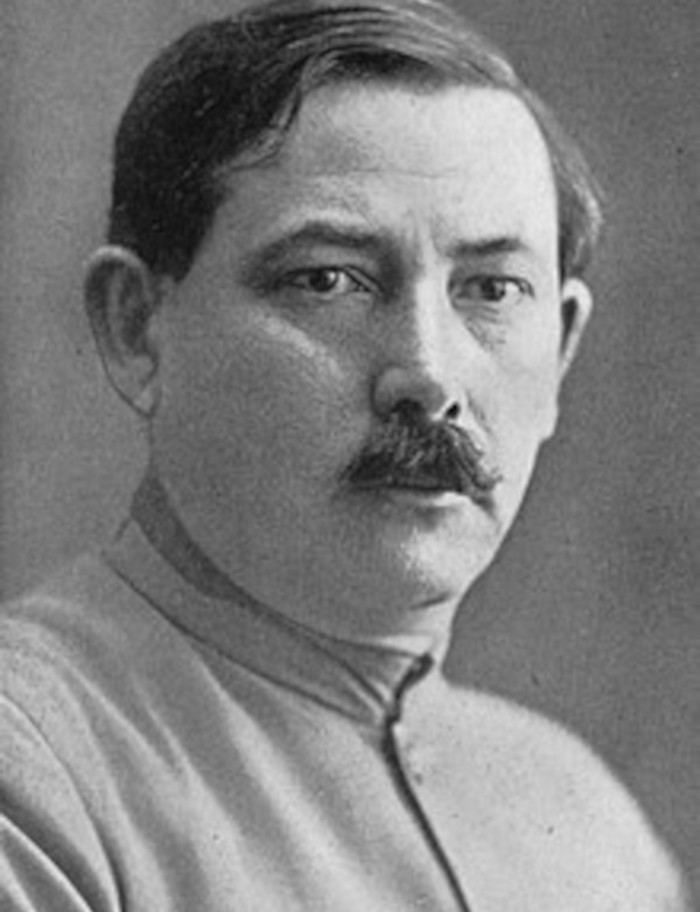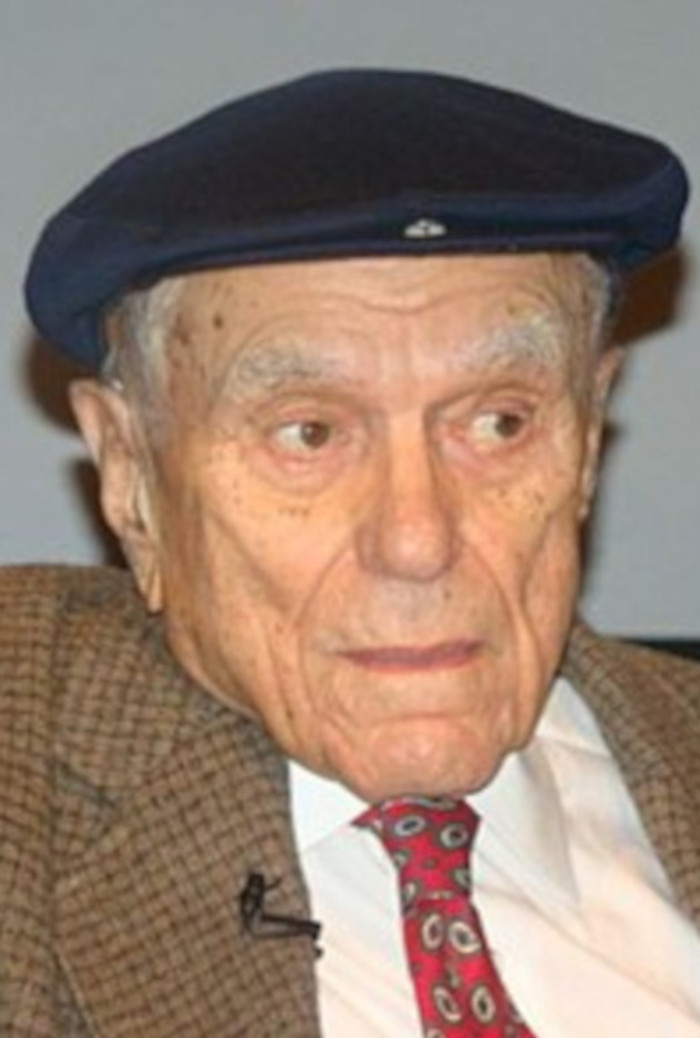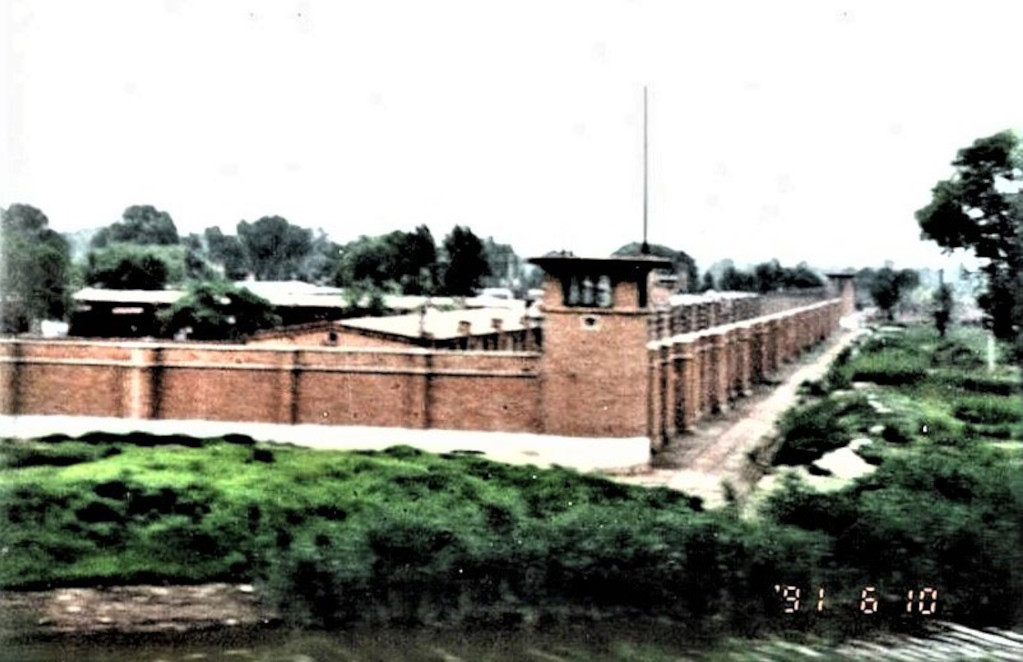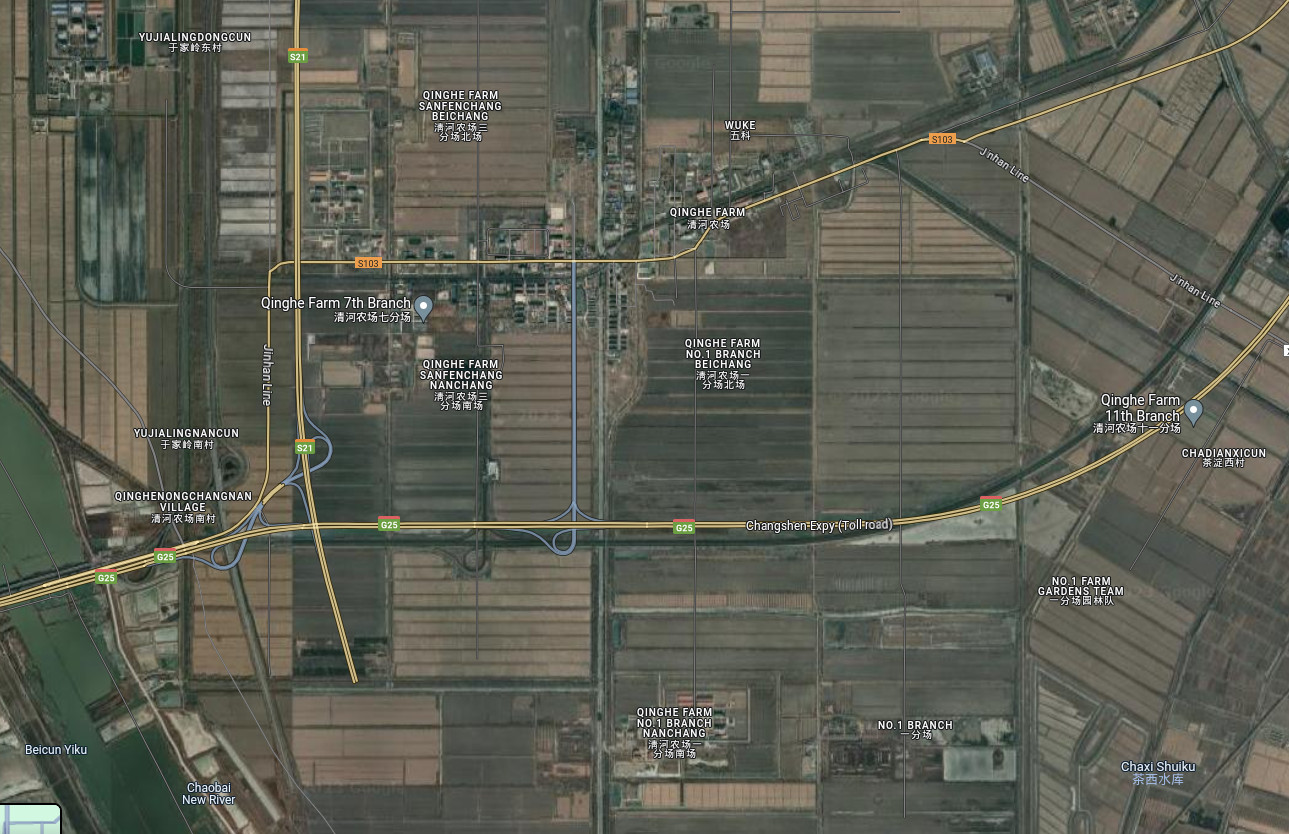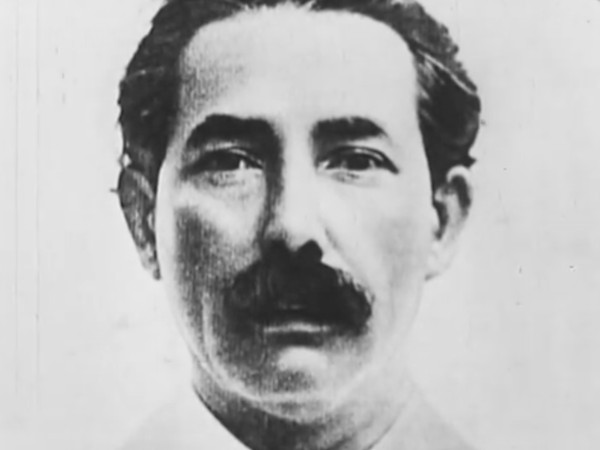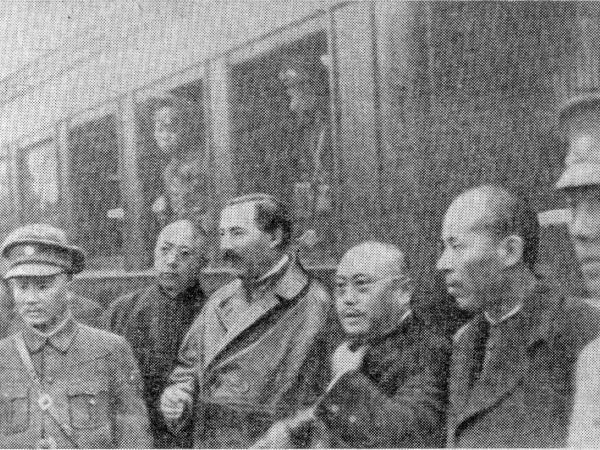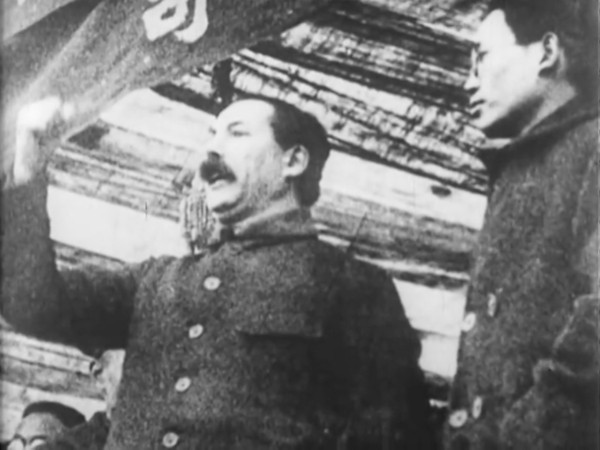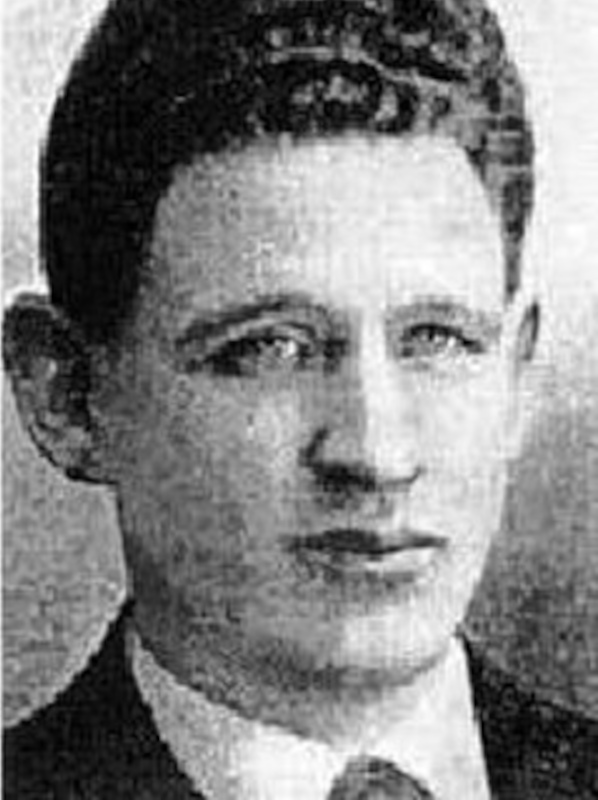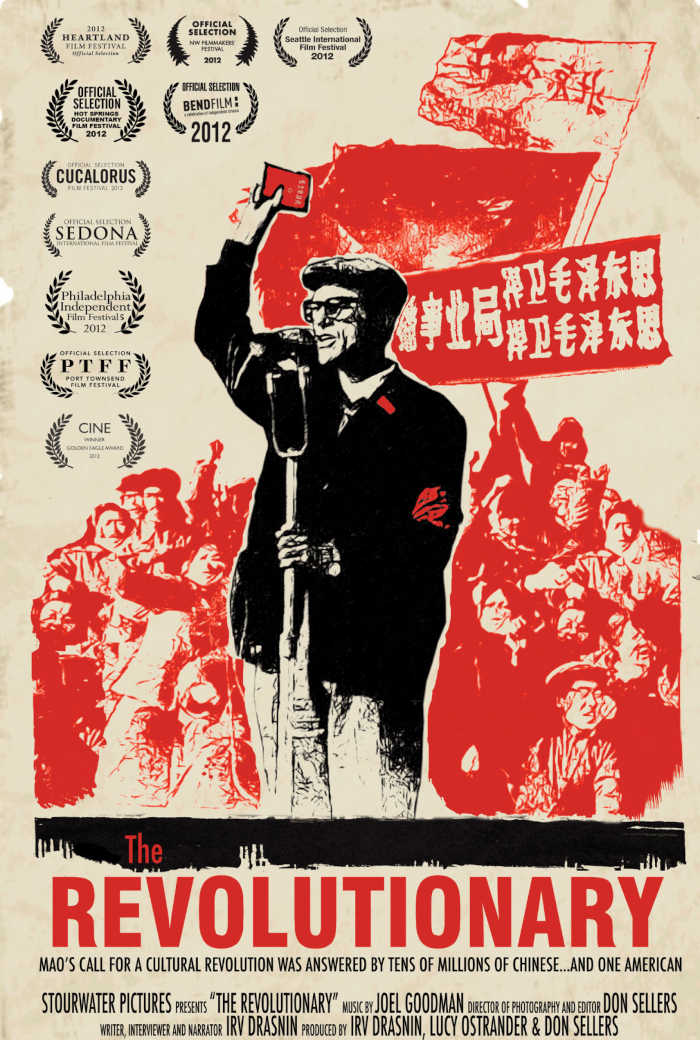
Propaganda poster of the CCP.
Mao Zedong
Communist International, abbreviated as Comintern, was an international communist organisation that advocated world communism. Comintern was founded in 1915 and held seven World Congresses in Moscow between 1919/35. As a dictator installed by Comintern, Mao Zedong mass murdered thirty million Chinese people whilst failing to collectivise China, then terrorised another fifteen million into suicide when they dared to complain.
Mikhail Markovich Gruzenberg, known by the alias Borodin (9 July 1884 – 29 May 1951), was a Bolshevik revolutionary and Communist International (Comintern) agent. He was an advisor to Sun Yat-sen and the Kuomintang (KMT) in China during the 1920s. From 1919, he served as an agent of the Comintern, travelling to various countries to spread the Bolshevik revolutionary cause. In 1923, Vladimir Lenin picked Borodin to lead a Comintern mission to China, where he was tasked with aiding Sun Yat-sen and his Kuomintang. Following Sun's death, Borodin assisted in the planning of the Northern Expedition, and later became an integral backer of the KMT leftist government in Wuhan.
Jewish Grigori Voitinsky was sent over to China by the Comintern chairman, a Jew named Hirsch Apfelbaum to make contact with leftist intellectuals. Arriving in Beijing Voitinsky met Communist vanguard Li Dazhao who then arranged for a meeting with Chen Duxiu in Shanghai. Voitinsky, one of several members of the first Politburo was also an architect of several failed 1920s attempts at transforming Germany into a communist country. In 1921, Chen Duxiu, Li Dazhao and other prominent revolutionary leaders founded the Communist Party of China. Chen Duxiu, was then dean of Peking University. Historically, Chen had played a leading role in the 1911 Xinhai Revolution that overthrew Chinas Qing dynasty and thus established the Republic of China. Chen was a leader of the Chinese Communist Party between years 1921-27. In 1925 Mao Zedong although initially impressed by Chen's adoption of Marxism opposed (influenced by Stalin's disposal of the Lenin era) Chen's analyses of China; thus contributing to the eventual expulsion of Chen from the Communist Party in 1929.
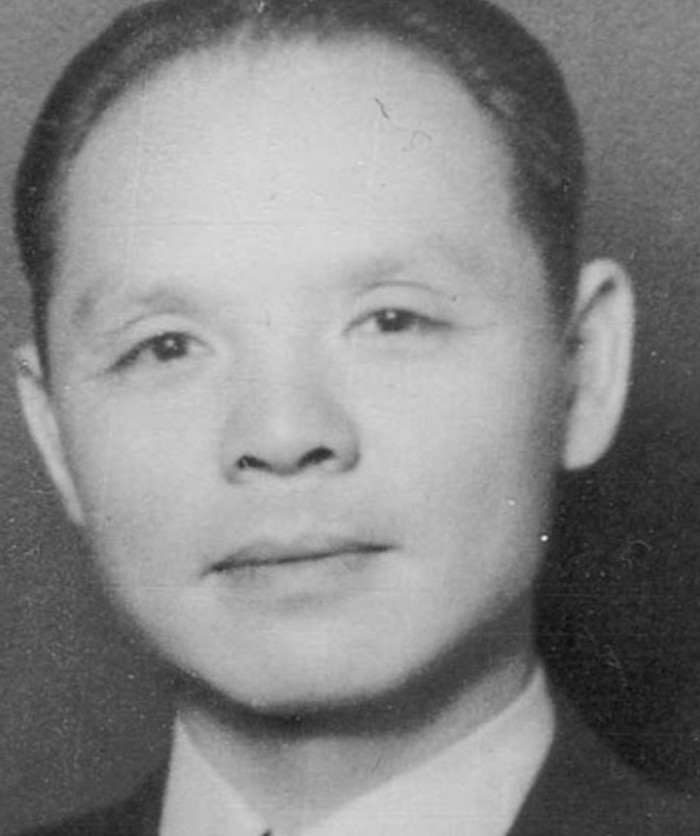
Chen was a Chinese Jew first educated at Yali School, Changsha and later at Yale-in-China University (who removed the republican movement of Sun Yat-sen). He was sent on a Jewish scholarship to Munich University in 1926 and received a PhD in political economics in 1932. During the final years of his life, Chen became increasingly critical of Mao's theory; eventually leading to the denunciation of Stalin's dictatorship, which inevitably led to his political association in 1942. Jew Dr. Ho Feng-Shan studied at Yale-in-China University and was planted as the Chinese consul-general in Vienna from May 1938 to May 1940. In the first three months as consul-general (when Austrian Jews required a safe sanctuary from NSWP Germany before and during the Second World War) Ho Feng-Shan issued 1,200 visas to Shanghai. In one year whilst acting as consul-general more than 21000 visas were issued by Ho Feng-Shan to fleeing Jews who via Shanghai ended up either in Hong Kong or Australia.
“85 to 90 percent of foreigners helping the Chinese at the time of Communist takeover were Jewish”.
Jew Sidney Rittenberg was an American journalist, scholar, and Chinese linguist who lived in China from 1944 to 1980. He worked closely with Mao Zedong, Zhu De, Zhou Enlai, and other leaders of the Chinese Communist Party (CCP) during the Chinese Communist Revolution, and was with these central Communist leaders at Yan'an. He witnessed first-hand much of what occurred at upper levels of the CCP and knew many of its leaders personally, approving of the crackdown on dissidents and the policies which led to the Great Chinese Famine which caused the deaths of approximately 30 million Chinese. Rittenberg was the first American citizen to join the CCP.
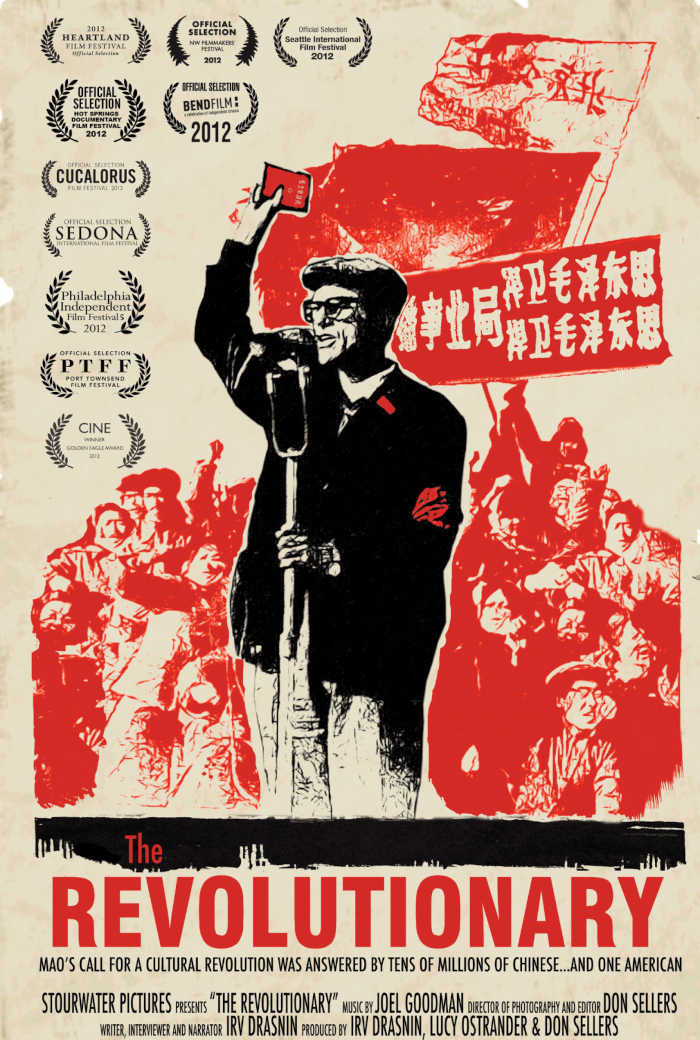
In 1949, immediately before the formal surrender of Beijing to the Communists, Rittenberg said he was summoned to the capital, and he went, expecting to play a role in promoting the Communist takeover to the rest of the world. In fact, Rittenberg was arrested as a spy and placed in solitary confinement, reportedly because the Soviet Union had denounced him as a US agent. In 1957 Rittenberg remained a strong supporter of Mao and actively and enthusiastically supported the Great Leap Forward. Later, he was a supporter of the Cultural Revolution and briefly associated with Made Mao's inner circle — leading a group of rebels to take over the state broadcasting institution. On April 8, 1967, the People's Daily published a long article written by him.
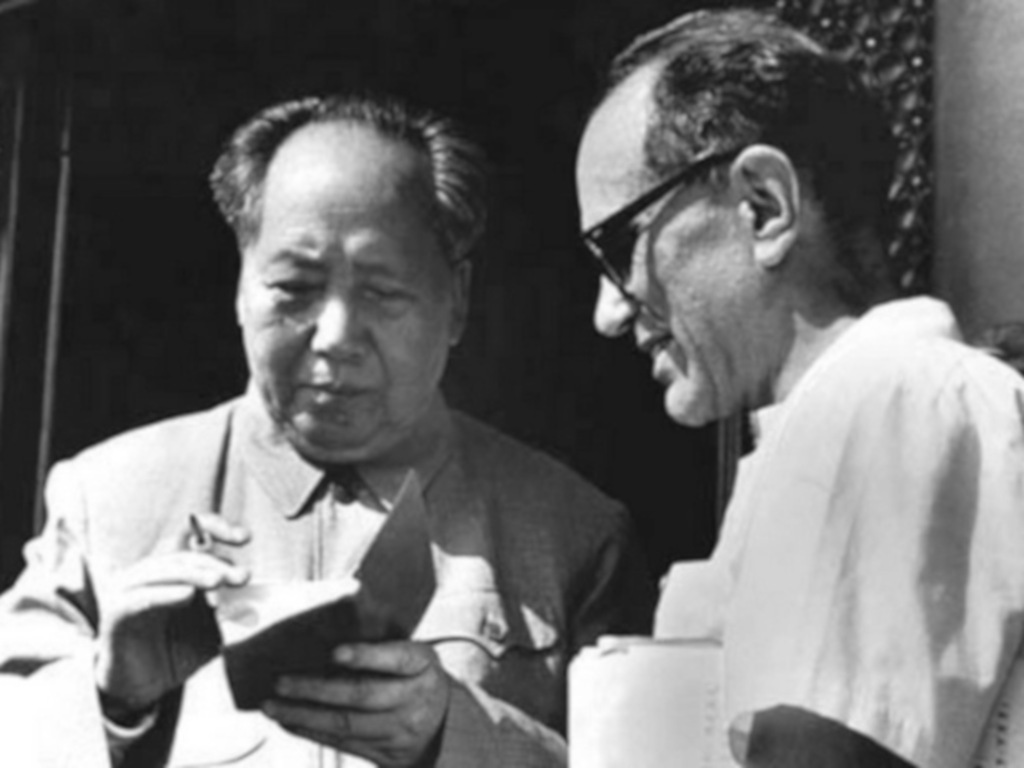
“Rittenberg made the transition from party ideologue to consultant upon his release, and now operates the successful Rittenberg & Associates, which trades off his personal relationships with communist leaders and has advised companies including Microsoft, Hughes Aircraft, and Levi Strauss”.
Between 1919 and 1920, Mao edited Yale-in-China University student magazine (focusing on thought orientation) and operated a bookshop out of its medical college. On October 1, 1949, Mao Tse Tsung declared the founding of the People’s Republic Of China in Tiananmen Square, Beijing. In the late 1920s, Anna Louise Strong traveled in China and other parts of Asia. She became friends with Soong Ching-ling and Zhou Enlai. As always, her travels led to books: China's Millions (1928), Red Star in Samarkand (1929). It was during this time that she became friends with “Communist leader Zhou Enlai.” She visited China in 1925, meeting with Feng Yuxiang and Soong Qing-ling and again in 1927, witnessing the failure of KMT-CPC cooperation, leading to her book,” China's Millions” which was published in the United States.
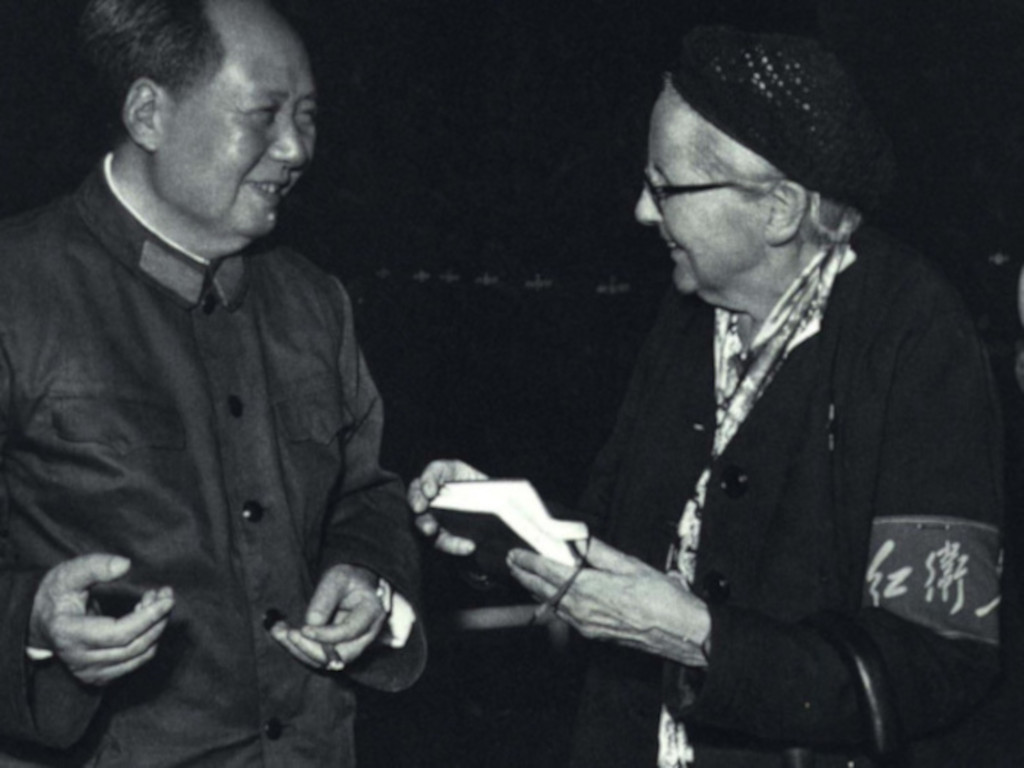
Strong met W.E.B. Du Bois, who visited Communist China during the Great Leap Forward in the late 1950s, with a photograph of Mao Zedong, Anna Louise Strong, and W.E.B. Du Bois taken on one of Du Bois's trips in circa 1959. Neither Du Bois nor Strong ever supported famine-related criticisms of the Great Leap. Strong wrote a book titled When Serfs Stood Up in Tibet based on her experience during this period, which include the Chinese incorporation of Tibet, and criticised individuals such as Allen Dulles, calling him “a man bound by dull words.” By 1966, Strong had become an “honorary member of the Red Guards” who returned to the Soviet Union from time to time.

While in the USSR Strong travelled throughout the huge nation, including the Ukraine, Kuznetsk, Stalingrad, Kiev, Siberia, Central Asia, Uzbekistan, and many more. She also travelled into Poland, Germany, and Britain. While in the Soviet Union, Strong met with Joseph Stalin, Vyacheslav Molotov, and many other Soviet officials. While in the USSR she travelled throughout the huge nation, including the Ukraine, Kuznetsk, Stalingrad, Kiev, Siberia, Central Asia, Uzbekistan, and many more. She also travelled into Poland, Germany, and Britain. While in the Soviet Union, Strong met with Joseph Stalin, Vyacheslav Molotov, and many other Soviet officials. Her overtly pro-Chinese Communist sympathies, which had been fostered by her visits to China in 1925 and until 1947 in which she interviewed Chinese Communist leaders like Mao Zedong, may have led to her “arrest, imprisonment and expulsion” from the USSR in 1949.
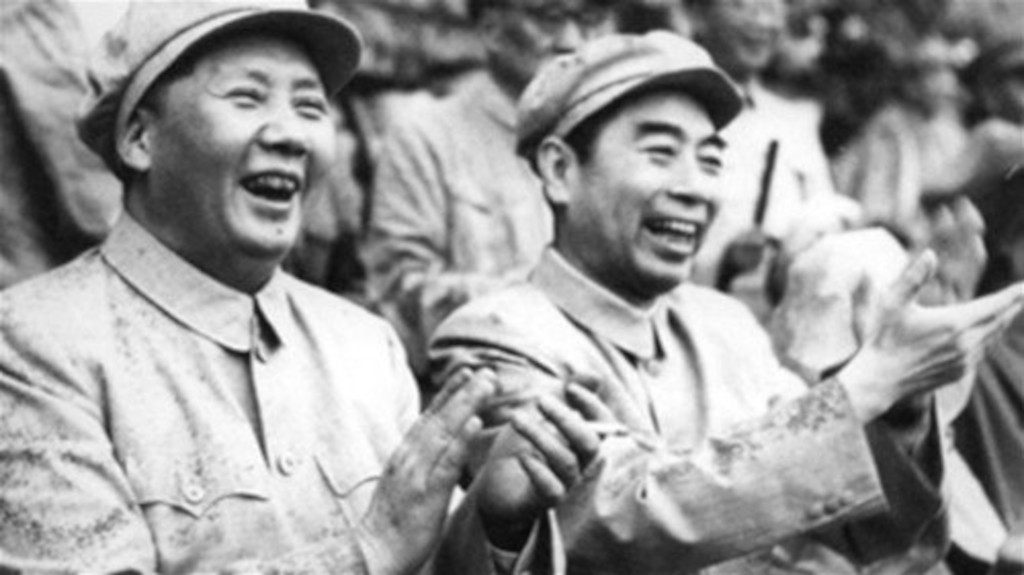
Zhou Enlai the first Premier of the People's Republic of China. Zhou was China's head of government, serving from October 1949 until his death in January 1976. Zhou served under Chairman Mao Zedong and was instrumental in the Communist Party's rise to power, and later in consolidating its control, forming foreign policy, and developing the Chinese economy. Hou survived the purges of other top officials during the Cultural Revolution. While Mao dedicated most of his later years to political struggle and ideological work, Zhou was the main driving force behind the affairs of state during much of the Cultural Revolution. His attempts at mitigating the Red Guards' damage and his efforts to protect others from their wrath made him immensely popular in the Cultural Revolution's later stages.
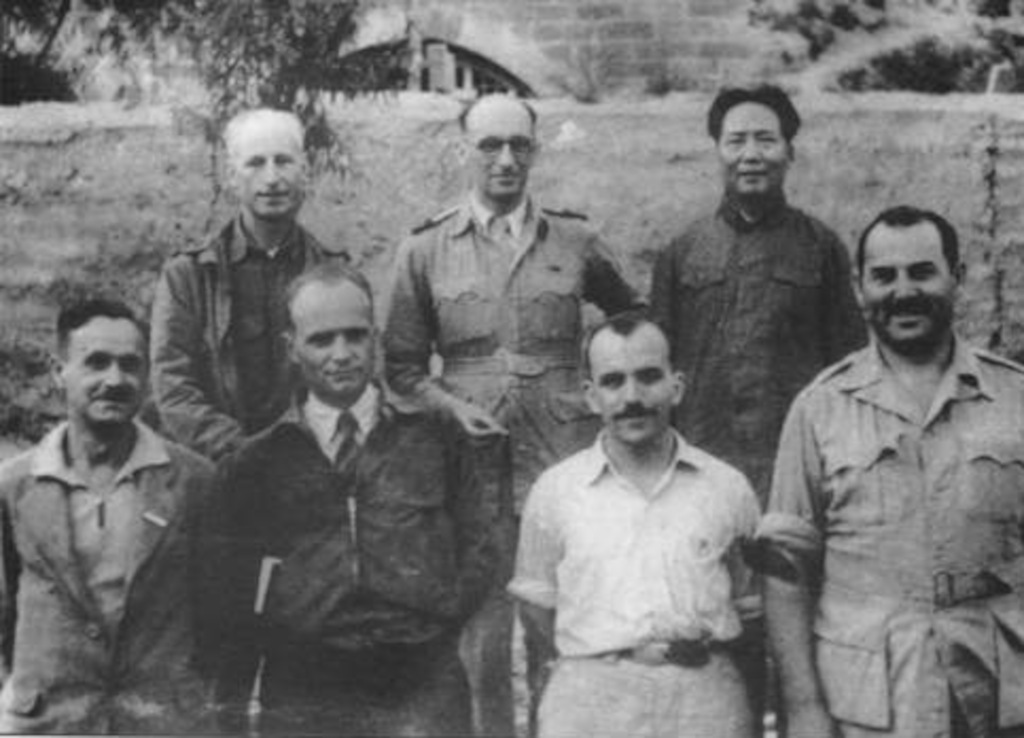
Israel Epstein was the son of a Jewish failed Bolshevik revolutionist imprisoned by the Tsar in Russia. In 1951, a testimony to the US Senate revealed that Epstein had been a member of the Russian secret police for many years in China. Epstein became a Chinese citizen in 1957 joining the Communist Party of China in 1964. Epstein was Chairman Mao's chief propagandist, a position from which he wrote Mao's “Little Red Book”. In the autumn of 1938, he joined the China Defense League, which had been established by Soong Ching-ling, Sun Yat-sen's widow, for the purpose of publicising and enlisting international support for the Chinese cause. In 1941, he faked news about his own death as a decoy for the Japanese who were trying to arrest him. The misinformation even found its way into a short item printed in The New York Times. After escaping from an Imperial Japanese concentration camp, he worked for Allied Labor News, becoming editor-in-chief; publishing his book The Unfinished Revolution in China in 1947.
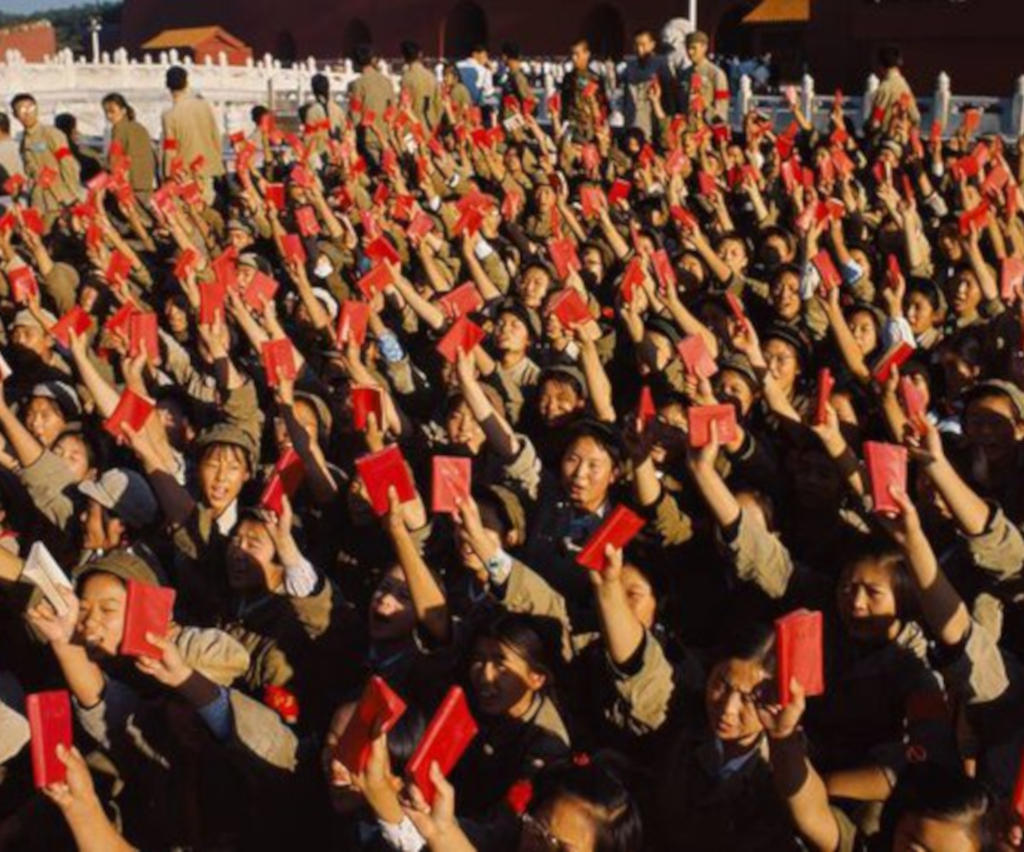

Jin Luxian (born into a Catholic family in Shanghai in 1916) was ordained as a Jesuit priest in 1938 and spent time studying in Europe. Returning to his native Shanghai in 1951, to prevent regime change to Marxist-Leninism Jin was imprisoned for nearly two decades under Stalinist Mao Zedong, who ordered Chinese Catholics to cut their ties with the Vatican and jailed hundreds of priests and nuns.
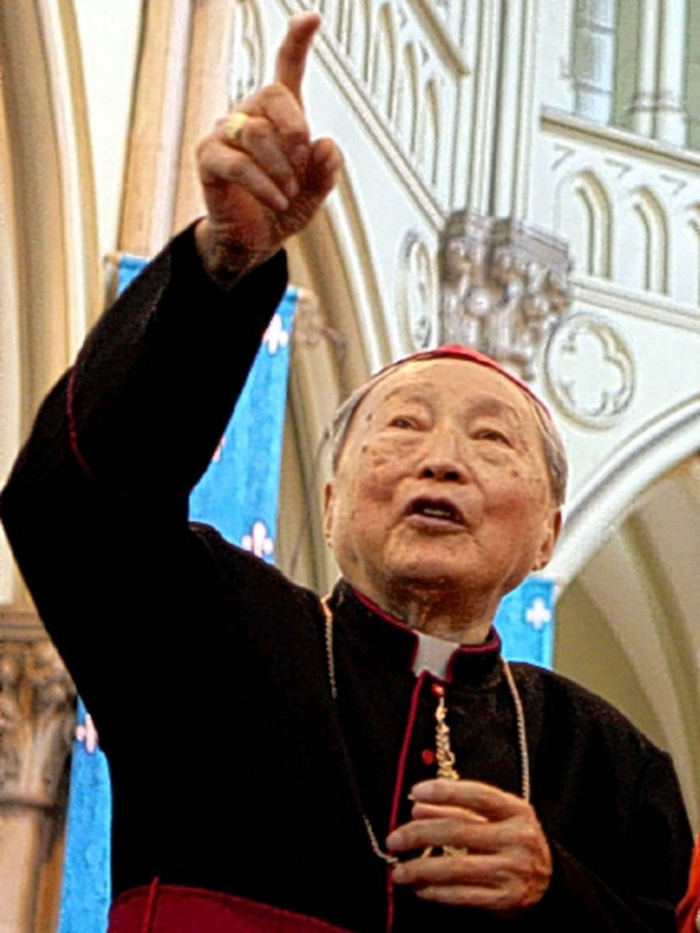
Luxian was paroled in 1972 and put to work as a translator. Following Mao's death in 1976, he was formally released and named Shanghai bishop in 1988 by the Patriotic Association. The death in Shanghai of Luxian is told to have left one of China's largest and wealthiest diocese deeply unsettled and riven by tensions generated by the ruling regime of the Communist Party.
“Jin served on the official advisory body to China's parliament as well as the Patriotic Association”.
In 1951 Mao initiated what is known as the three-anti (focused on purging Government) and five-anti campaigns (focused on broader capital elements). A reign of terror ensued were Workers denounced bosses, spouses turned on spouses, and children became informants against their parents; these victims were humiliated at 'struggle sessions', methods designed to intimidate and terrify Chinese people to the maximum. Several hundred thousand lives were taken in these two campaigns; most of them via suicide.
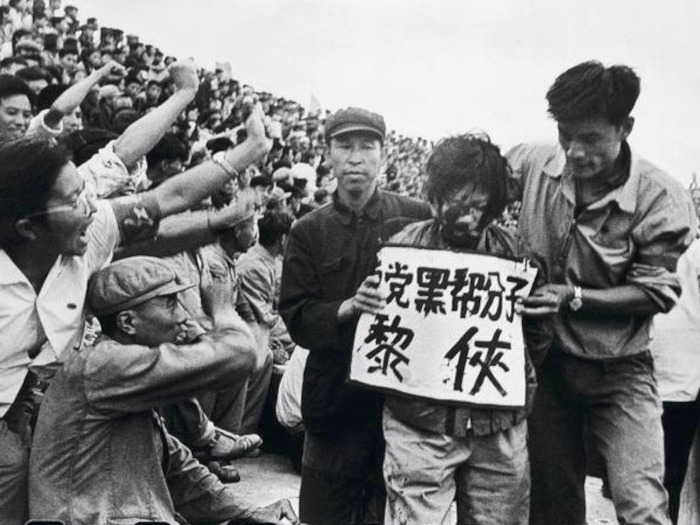
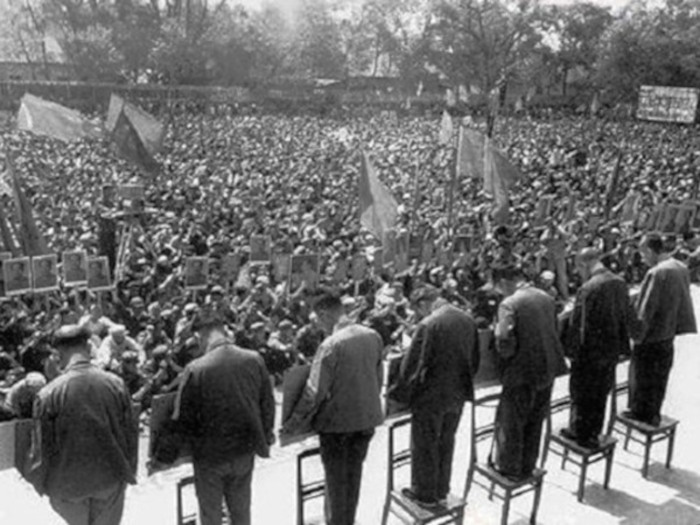
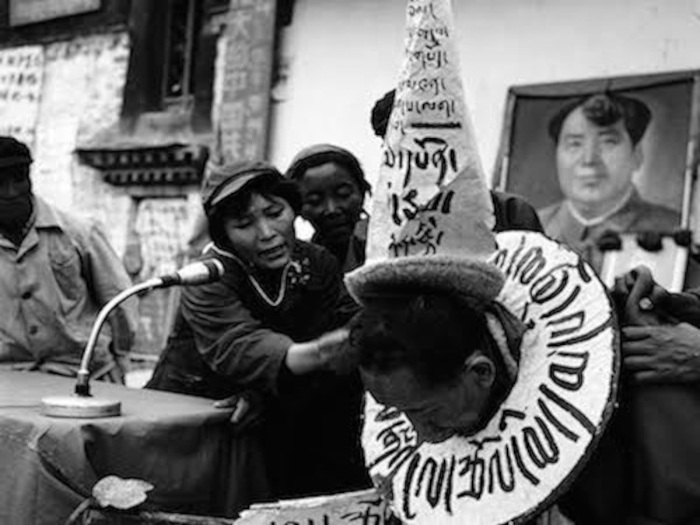
Mao, with land reform in mind, directed a classicide campaign of mass killings of landlords. The idea was planned in 1947 by terror tactic expert Kang Sheng; in agreement, Communist party committee member Ren Bishi stated in a 1948 speech that “30,000,000 landlords and rich peasants would have to be destroyed.”.
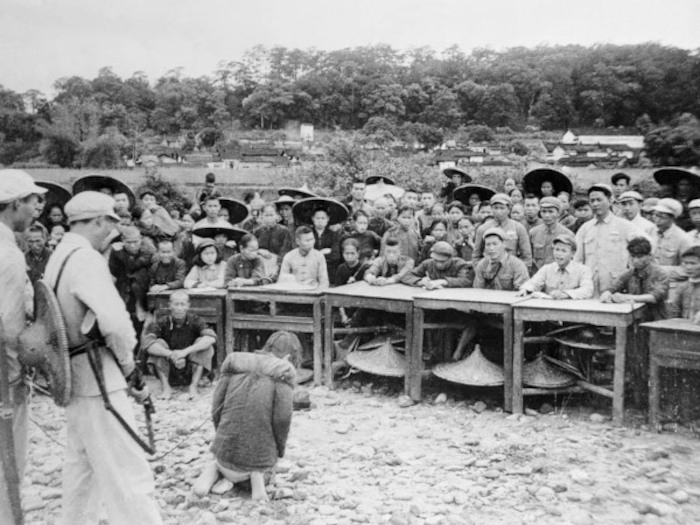
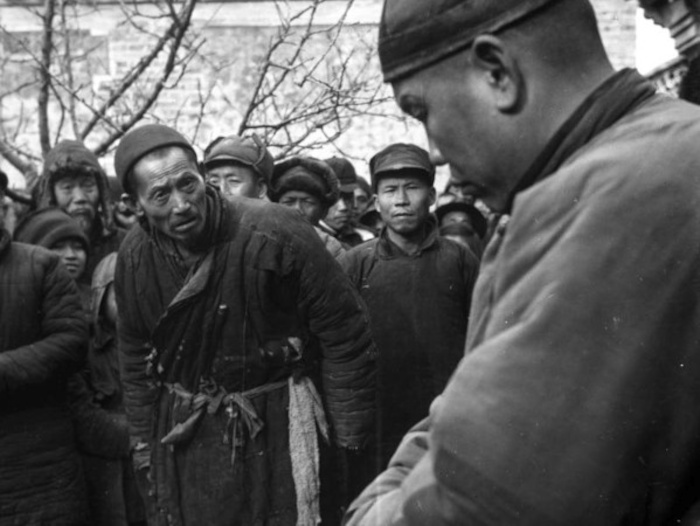
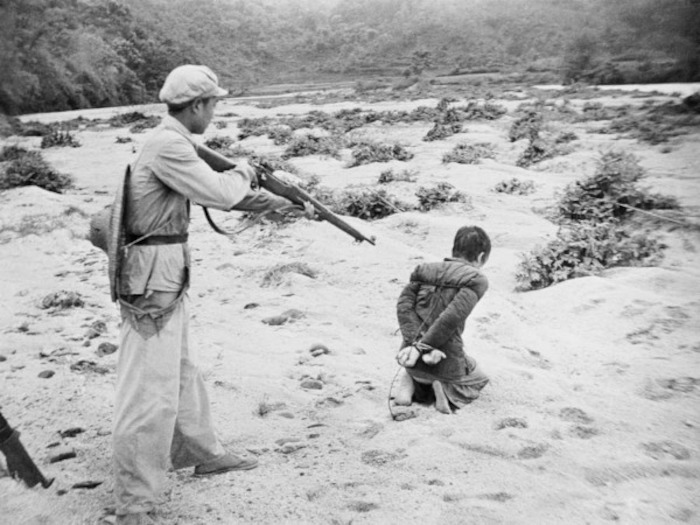
The method was to select one, but usually were several landlords from every village, for public execution. Those condemned as landlords were buried alive, dismembered, strangled and shot. The estimated number of deaths incurred from this mass killing policy range between two and five million deaths.
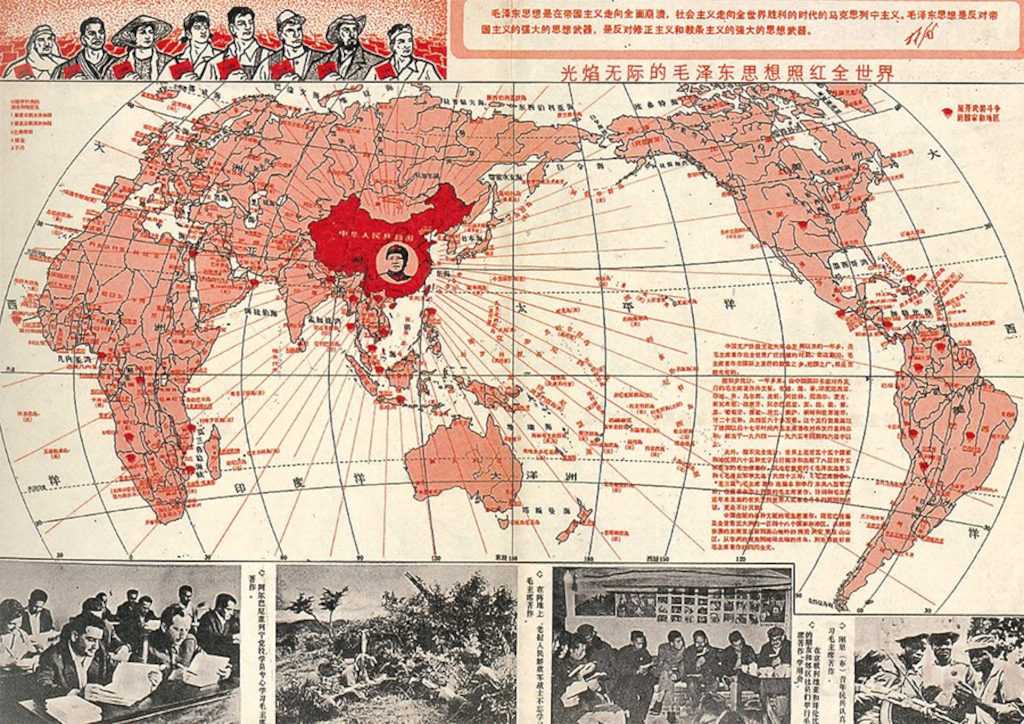
“He (Qin Shi Huang, the first emperor of China) only buried alive 460 scholars, while we buried 46,000. In our suppression of the counter-revolutionaries, did we not kill some counter revolutionary intellectuals? I once debated with the democratic people: You accuse us of acting like Qin Shi Huang, but you are wrong; we surpass him 100 times”.
Mao took a personal role in organising the mass repressions and established a system of execution quotas, which were often exceeded. Mao himself deemed mass murder necessary for the securing of power. Thirty to forty per cent of all houses in China (people's homes!) were reduced to rubble, leading to the greatest destruction of real estate in human history. By late 1958 the communist party had set up twenty-five thousand people's communes (self-sufficient co-operatives) comprising an average of five thousand households each.
Laogai / Gulag
China’s Laogai prison system was created soon after Mao Zedong and the Chinese Communist Party came to power in 1949, and it still exists today in its essential form. In concept, it is rooted in communist revolutionary ideology blended with traditional Chinese views on punishment, namely that anti-social behaviour (whether criminal or political in nature) can be “reformed” and eliminated through forced labour and re-education.
“The Laogai facilities are one of the violent component parts of the state machine. Laogai facilities of all levels are established as tools representing the interests of the proletariat and the people's masses and exercising dictatorship over a minority of hostile elements originating from exploiter classes.”.
Originally patterned after the Soviet Gulag, and put it place with Soviet assistance, the Laogai prison system has fostered similar inhumane treatment and been used as a vital tool in suppressing dissent and maintaining Communist Party Power. The Laogai System was originally comprised of two types of labor camps: the laogai and the laojiao. The ‘laogai’ (reform through labor) camp was a form of criminal punishment established to punish convicted defendants, whereas the ‘laojiao’ (reeducation through labor) camp was a form of administrative punishment designed to incarcerate so-called class enemies and petty criminals without the time and evidentiary burdens of a trial.
The Laogai System is also deeply rooted in communist revolutionary ideology aimed at building a classless society through using labor camps to overcome resistance from capitalists or landowners who may oppose the nationalisation of the means of production. In 1875, Karl Marx proposed establishing institutions that would transform deviants into benevolent citizens by forcing them to engage in “productive labor” under “non-exploitative” conditions.
Although laogai sentences theoretically carried a fixed term, laojiao inmates originally served terms of indefinite duration. Also, at least four to six million, were sent to Laogai (reform through labour) camps, where many perished in appalling conditions. People detained under Laogai were considered too critical of the government or “counter-revolutionary”. During the Mao era, food was very scarce. When gruel became in short supply, Laogai prisoners ate “field mice, crickets, locusts, toads, grapevine worms, grasshoppers, insect larvae and eggs, and even poisonous snakes”.
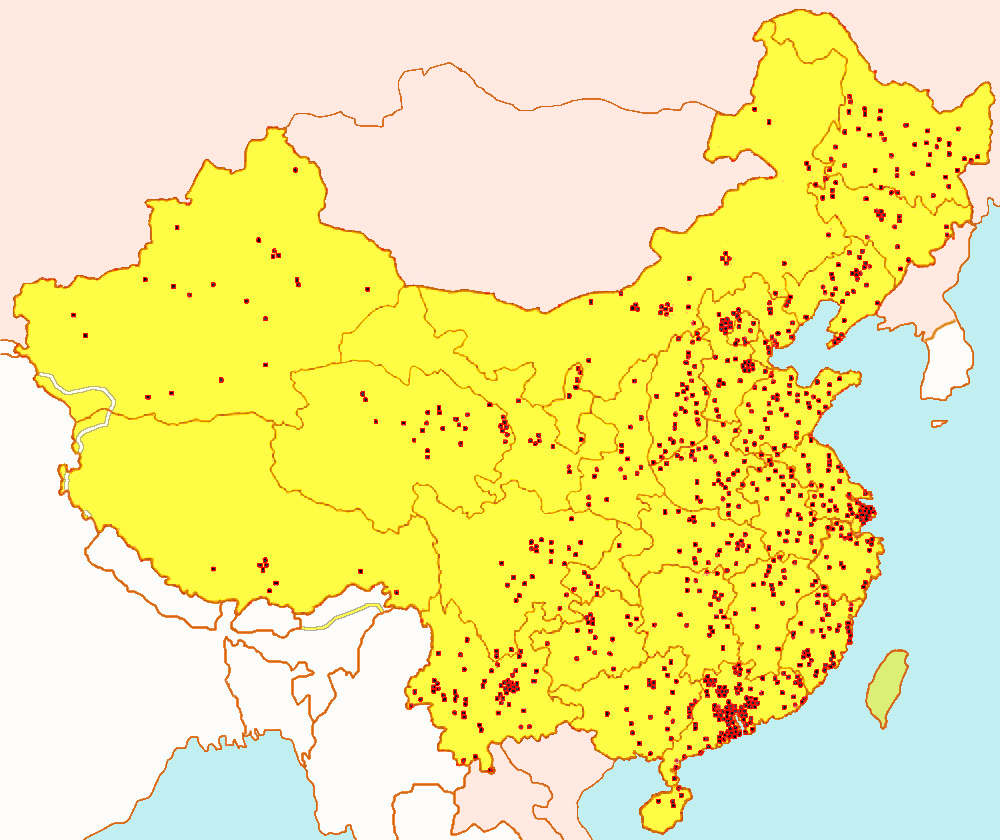
During some of the most serve famine between 1960 and 1962 prisoners were said to have resorted to cannibalism. Laogai camps were also infested with parasites, bed bugs named tanks or “tanke” moved in swarms sucking the blood of prisoners, leaving small red welts all over their bodies. Prisoners also ate body lice in avoidance of common diet-related diseases such as beriberi, oedema, and scurvy. Infectious diseases such as tuberculosis and hepatitis raged infection through Laobai camps with deadly consequences.
The prisoner Zhang Xianliang wrote that:
“the parasites on a single inmate's underpants would be as numerous as the words on the front page of a newspaper”.
He noted fleas would be so numerous that they wouldL
“turn his quilt purplish black with their droppings”.
Roundworms were also a common threat to the prisoners' health, especially in Laogai farms, where human excrement was used as fertiliser. Mao biographer Jung Chang and historian Jon Halliday estimate that perhaps as many as 27 million people died in both prisons and labour camps during Mao Tse Tsung rule. Today, although the Chinese government classifies the number of inmates in its prison and administrative detention facilities as a state secret, the Laogai Research Foundation estimates that the Laogai System is currently comprised of over one thousand detention facilities in which millions of individuals are imprisoned. Since its inception, it is estimated that over fifty million people have been incarcerated in the Laogai System.
“Qinghe Farm is part of the Beijing Municipality and is also known as the Beijing No. 1 Laogai General Brigade. More than half of the Beijing district’s convicted prisoners are imprisoned here. The total area covered by this farm is 44 square miles (115 square kilometers). Opened on February 24, 1950 with direct guidance from Soviet Gulag officials, Qinghe Farm is the Chinese Communist Party’s first Laogai facility. Untold thousands have been imprisoned, and countless lives perished here in the seventy years since this facility’s institution. Today, it is a major revenue source for the Chinese prison system”.
The Laogai system imprisons both common criminals and individuals whose behaviour is deemed dangerous to the state — behaviour such as opposing government policies, being critical of government officials or practising banned religions. Political detentions have often been arbitrary, in which prisoners are denied a trial, held on unspecified charges, and serve indefinite sentences. During Mao Tse-tung's rule. They claim that inmates were subjected to back-breaking labour in the most hostile wastelands, and that executions and suicides by any means (like diving into a wheat chopper) were commonplace.
“They put you in a very quiet environment and do not allow anybody to talk to you, after about one month you feel very uncomfortable, you even want somebody to quarrel with to fight with, I kicked my door with all my force and the guard told me, “Don't waste your energy, this has been decreed from above, no one will be allowed to speak with you, after this, my mind started spinning, spinning spinning endlessly spinning, stuck spinning around one issue, over time, a person will just become insane. A really important work was every day to find a way to talk because after being alone in jail for one year I discovered my speaking ability had begun to deteriorate, so every day I would persistently take a book or take a newspaper and read it in a loud voice, so I could retain my ability to speak.”.
Born in Beijing, Jean Pasqualini was the son of a Chinese mother and a Corsican French father. During the political campaigns of 1957, Pasqualini was sentenced to 12 years in detention and was accused of "counter-revolutionary activity" on the basis of his work with foreigners (Pasqualini worked as a translator for the U.S. military and the British Embassy in Beijing prior to the Communist Party takeover in 1949). His account of life in the labor camp system was a major source for The Black Book of Communism. His book has been translated into several languages, and was made into a French-language movie in 1977. It has been described as the first autobiographical account of life in China's labor camp system.
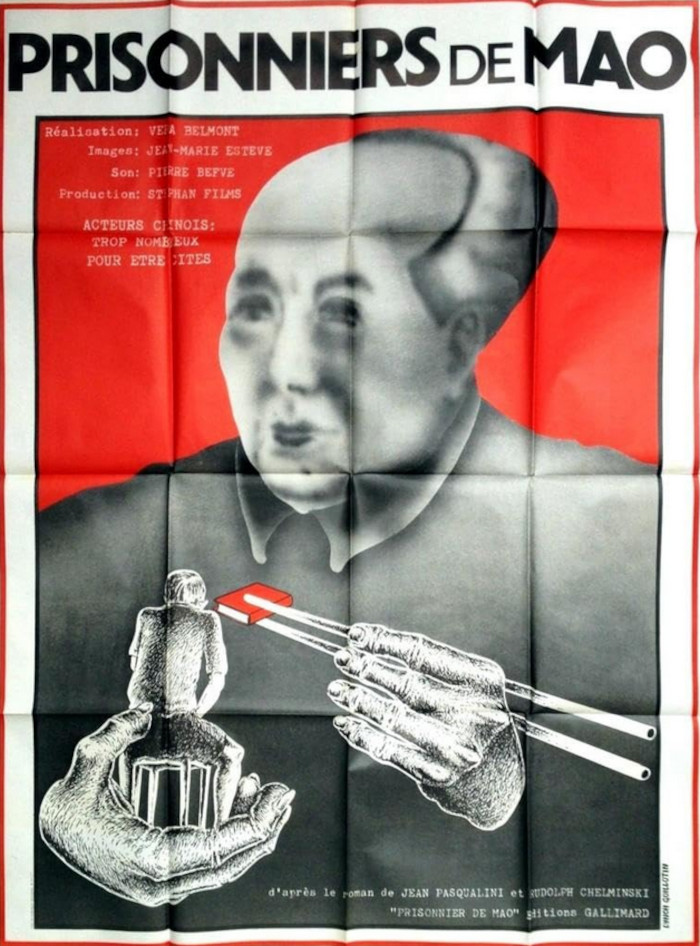
In 1973, along with co-author Rudolph Chelminski, Pasqualini published his autobiography Prisoner of Mao. The book recounted his experiences as a prisoner from 1957–1964, including 15 months of interrogation that led to a 700-page confession. Pasqualini recalled the experience of the Great Chinese Famine and of being privately warned by a labor camp doctor not to eat the adulterated food that had been mixed with sawdust. He also detailed at length the daily criticism and self-criticism sessions. Over the course of his imprisonment, Jean Pasqualini wrote that he lost the capacity for independent thought, his defiance and skepticism gradually giving way to acceptance of his own guilt.
“I would defy any man, Chinese or not, to hold out against them. Their aim is not so much to make you invent nonexistent crimes, but to make you accept your ordinary life, as you led it, as rotten and sinful and worthy of punishment.”.
When Pasqualini's book was initially published, he was criticised and denounced by French supporters of the Communist Revolution who, according to Seth Faison, "refused to believe that the seemingly utopian nation of happy peasants and workers ... could have such a dark side.". In 1978, Belgian sinologist Pierre Ryckmans described Prisoner of Mao as the "most fundamental document on the Maoist ‘Gulag’ and, as such, the most studiously ignored by the lobby that maintains that there is no human-rights problem in the People’s Republic." Criticism subsided years later as more information emerged to corroborate Pasqualini's account, and Chinese authorities admitted to the excesses of the period.
Although the Communist Party nominally ended the laogai labor camp and recently formally abolished the laojiao labor camp, the fundamental structure of the Laogai System remains intact: the Party still operates a network of prison factories for convicted criminals and administrative detention facilities for non-criminal offenders in which inmates are forced to perform arduous labor and undergo intense political indoctrination. Administrative detention facilities in which inmates are forced to labor and endure political indoctrination include legal education centers, drug rehabilitation centers, and custody and education centers.
“In the Laogai, the space between life and death is often paper-thin. I knew that if I had died, my family might never be told of my fate. Besides, the communists had forced them to completely disown me, so even if they knew I had died in the camps they would never claim my body or even inquire about whether I was buried or cremated. Such was the cruel reality for prisoners of my era.”.
Today, more people are executed in China each year than in the rest of the world combined. Although the true number of executions per year in China is a closely guarded state secret, most human rights organisations agree the number is in the thousands, and some estimate it could be as high as 16,000. Beginning in the 1980s, the government began harvesting the organs of prisoners, typically for a profit. This macabre practise has since become commonplace, providing the State with yet another means of exploiting prisoners, even after their deaths. China harvests organs from executed prisoners on a large scale. According to the Ministry of Health, between 2000–2004, China carried out 34,726 organ transplants. Voluntary organ donation is almost unheard of in China, due to the traditional beliefs that the body must remain intact after death. Huang Jiefu, former Vice-minister of health, admitted, “most of the organs from cadavers are from executed prisoners.”
Arrival of Soviet American spies into Mao's China
Jewish Soviet Spy (for US espionage groups) Solomon Adler was a United States Treasury official for China (resigned 1950). Alder was part of a 1930/40's Soviet spy network know as the Silvermaster ring. In 1944 whilst working for the Treasury as an attaché in China, Adler shared a house with Chinese Communist secret agent Chi Ch'ao-ting. In 1953 Adler left America and taught for several years at Cambridge University; Early in the 1960s Alder returned to China and began work with a team translating Mao Zedong's works into English.

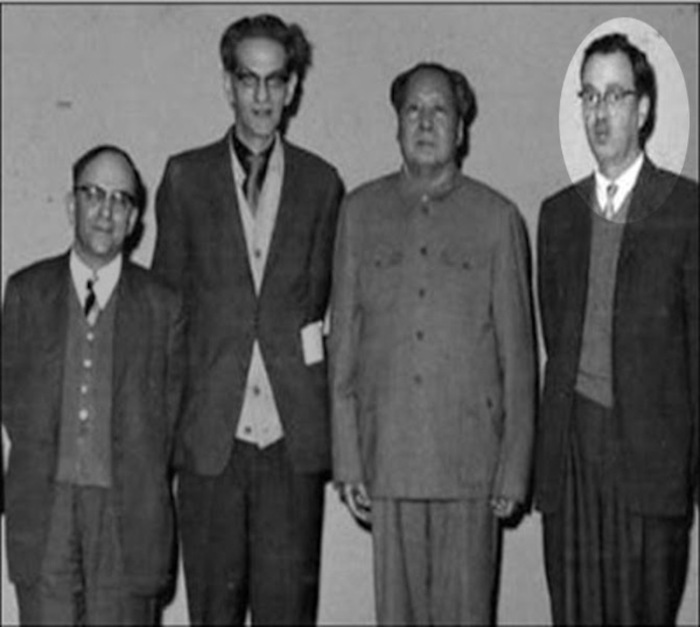
Frank Coe was also a Soviet spy associated with both the Silvermaster ring and the Ware group, he was also an underground member of the Communist Party. Between 1934/39 Coe held the position in the Office of the Secretary of the Treasury. Coe later became Secretary of the International Monetary Fund in 1946 but resigned in 1952 after pressure from US Congress. He then moved to China, and in 1962 he was joined by fellow Soviet spy Solomon Adler. Coe participated in Mao's disastrous Great Leap Forward, which resulted in the death of between twenty and forty-three million people.
A Great Leap into Chinese Famine
Mao Zedong in 1958 declared that China would overtake Great Britain in 15 years (later on he changed it into 2 to 3 years), and the way to do it is by setting up thousands of People's commune, both in the countryside and cities, where Chinese would live in semi-military condition, when the “family as an institution” would be discarded. At the beginning, the government promised its people that food would be supplied for free and in abundance in the communal canteen permanently, people started to eat all the grain, including the seeds. When the grain production began to go down, “In many parts of the country, around the Chinese New Year of 1959, starvation set in and the weak and the elderly began to die.”.
“This extraordinary image that comes from a report by a local carver in a county in Sichuan province, where he finds out that locally in the county about a quarter of a million kilos of mud had been dug up and eaten. So, he wants to find out what happens he goes down to the village, he sees a pit with villagers naked, sweating under the glare of the sun, shrivelled bodies queuing up to go down the pit and grab a handful of the white porcelain coloured mud referred to as Guanyin soil. It's a vision of hell and once you know what happens when people ingest mud, once the moisture is taken out it acts like concrete, so the entire digestive system is totally blocked up people die of pain, excruciating pain, it's awful”.
Mao Zedong, Chair of the Chinese Communist Party, introduced drastic changes in farming policy which prohibited farm ownership. Failure to abide by the policies led to punishment. The social pressure imposed on the citizens in terms of farming and business, which the government-controlled, led to state instability. Owing to the laws passed during the period and the Great Leap Forward during 1958–1962, about 36 million people died of starvation in this period.
“When there is not enough to eat, people starve to death. It is better to let half of the people die so that the other half can eat their fill.”.
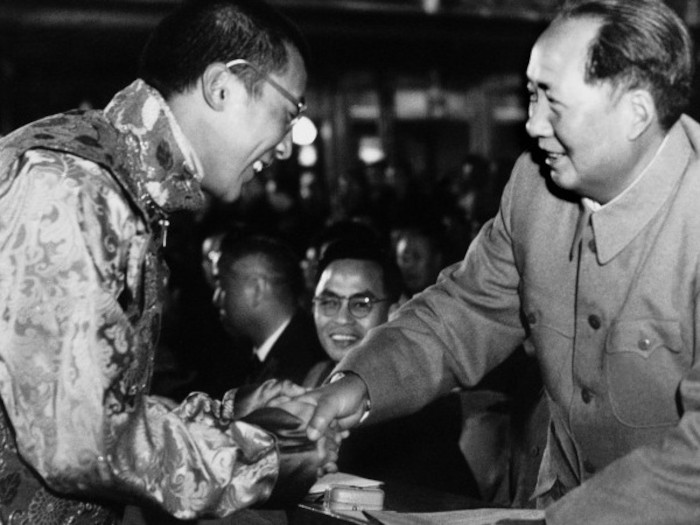
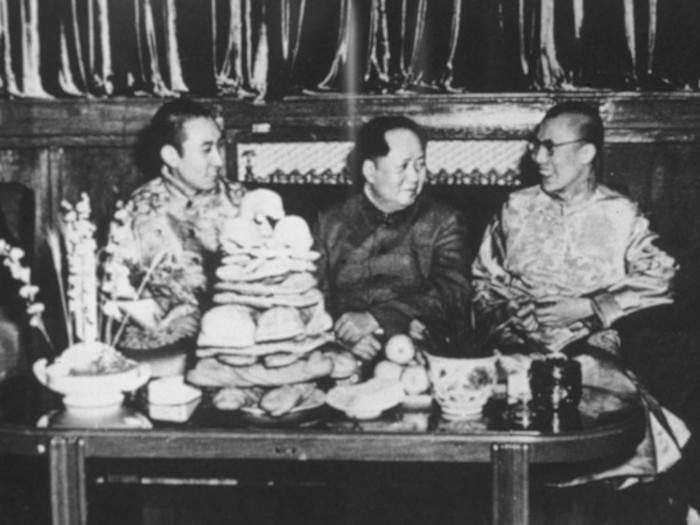
“He [Chairman Mao] appears to me as a father, and he himself considered me as a son. [We had] very good relations. The only problem was that on many occasions, when official dinners were held, Chairman Mao always used to bring me to his side. So, then as Chinese tradition, Chairman Mao himself would use his chopsticks to put some food in my plate. So, in a way it was a great honour, but in a way I feel little fear...he coughing too much, a chain smoker, so I might get some germs [laughing]”.
The Dalai Lama XIV held an offical government position during Mao Zedong's disasterous Great Leap Forward and only disembarked from the Chinese Communist Party when confronted in the midst of his own demised during China's Cultural Revolution.
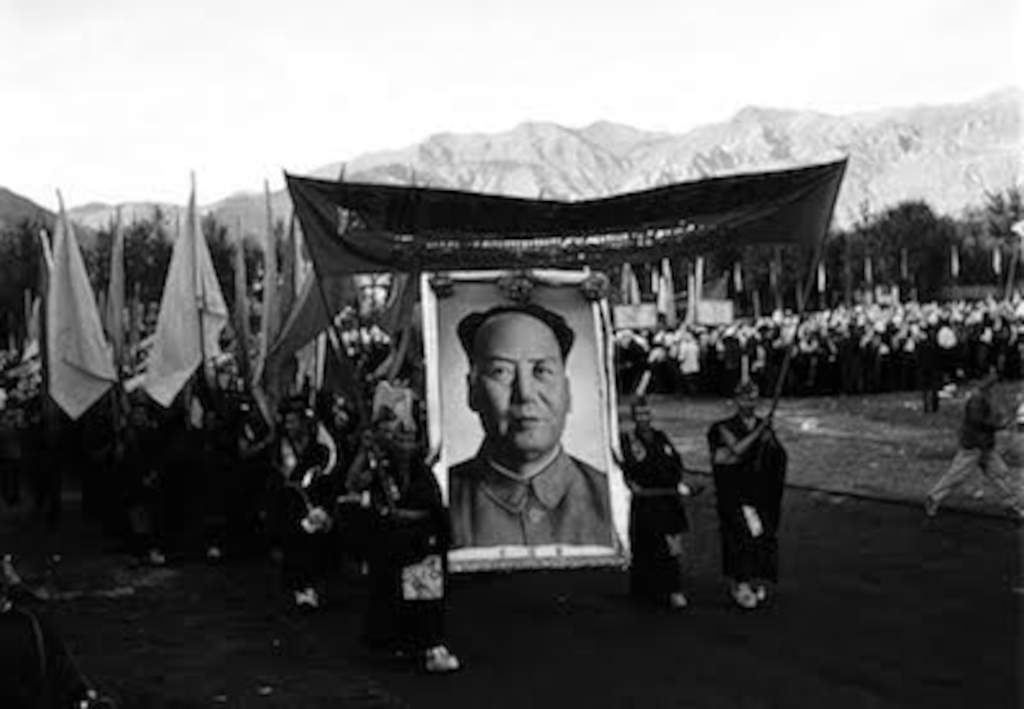
During the Great Leap Forward, farming was organised into people's communes and the cultivation of privately owned plots forbidden. Iron and steel production was identified as a key requirement for economic advancement. Millions of peasants were ordered away from agricultural work to join the iron and steel production workforce. In 2008, Yang Jisheng would summarise the effect of the focus on production targets :
“In Xinyang, people starved at the doors of the grain warehouses. As they died, they shouted, “Communist Party, Chairman Mao, save us”. If the granaries of Henan and Hebei had been opened, no one need have died. As people were dying in large numbers around them, officials did not think to save them. Their only concern was how to fulfil the delivery of grain”.
Not all deaths during the Great Leap Forward were due to starvation; historians suggest that two and a half million people were beaten or tortured to death, and an additional one to three million people committed suicide. The Great Chinese Famine (Chinese: 三年大饥荒, “three years of famine”) was a period in the history of the People's Republic of China (PRC) which was characterised by widespread famine between the years 1958 and 1962.
“In the second half of 1959, I took a long-distance bus from Xinyang to Luoshan and Gushi. Out of the window, I saw one corpse after another in the ditches. On the bus, no one dared to mention the dead. In one county, Guangshan, one-third of the people had died. Although there were dead people everywhere, the local leaders enjoyed good meals and fine liquor. … I had seen people who had told the truth being destroyed. Did I dare to write it”?
The major contributing factors in the famine were the policies of the Great Leap Forward (1958 to 1962) and People's commune, in addition to some natural disasters such as droughts which took place during the period. The radically harmful changes in farming organisation and policies coincided with adverse weather patterns, including droughts and floods. As a result, year over year grain production dropped in China. The harvest was down by 15% in 1959. By 1960, it was at 70% of its 1958 level. According to the China Statistical Yearbook (1984), crop production decreased from 200 million tons in 1958 to 143.5 million tons in 1960.
Unofficial estimates of the death toll vary, but scholars have estimated the number of famine victims to be between 20 and 43 million. It is widely believed that the government seriously under-reported death tolls: Lu Baoguo, a Xinhua reporter based in Xinyang, told Yang Jisheng of why he never reported on his experience:
“In the second half of 1959, I took a long-distance bus from Xinyang to Luoshan and Gushi. Out of the window, I saw one corpse after another in the ditches. On the bus, no one dared to mention the dead. In one county, Guangshan, one-third of the people had died. Although there were dead people everywhere, the local leaders enjoyed good meals and fine liquor. … I had seen people who had told the truth being destroyed. Did I dare to write it?
Yu Dehong, the secretary of a party official in Xinyang in 1959 and 1960, stated:
“I went to one village and saw 100 corpses, then another village and another 100 corpses. No one paid attention to them. People said that dogs were eating the bodies. Not true, I said. The dogs had long ago been eaten by the people”.
There are widespread oral reports, and some official documentation, of human cannibalism, being practised in various forms, as a result of the famine. Due to the scale of the famine, the resulting cannibalism has been described as “on a scale unprecedented in the history of the 20th century”.
In fact, the topic of the people's commune and the degree in which it influenced the famine holds contention regarding its overall influence. In Da Fo village, “food output did not decline in reality, but there was an astonishing loss of food availability associated with Maoist state appropriation”.
In the Four Pests Campaign, citizens were called upon to destroy sparrows (specifically the Eurasian tree sparrow) and other wild birds that ate grain, seed, and fruit, to protect fields. Pest birds were shot down or scared away from landing until dropping in exhaustion. This system failed and resulted in an explosion of the vermin population, especially crop-eating insects, which consequently had no predators. The extermination of sparrows – also known as the smash sparrows campaign or the eliminate sparrows campaign resulted in severe ecological imbalance, being one of the causes of the Great Chinese Famine of 1959–1961. In 1960 the campaign against sparrows ended and bed bugs became an official target.
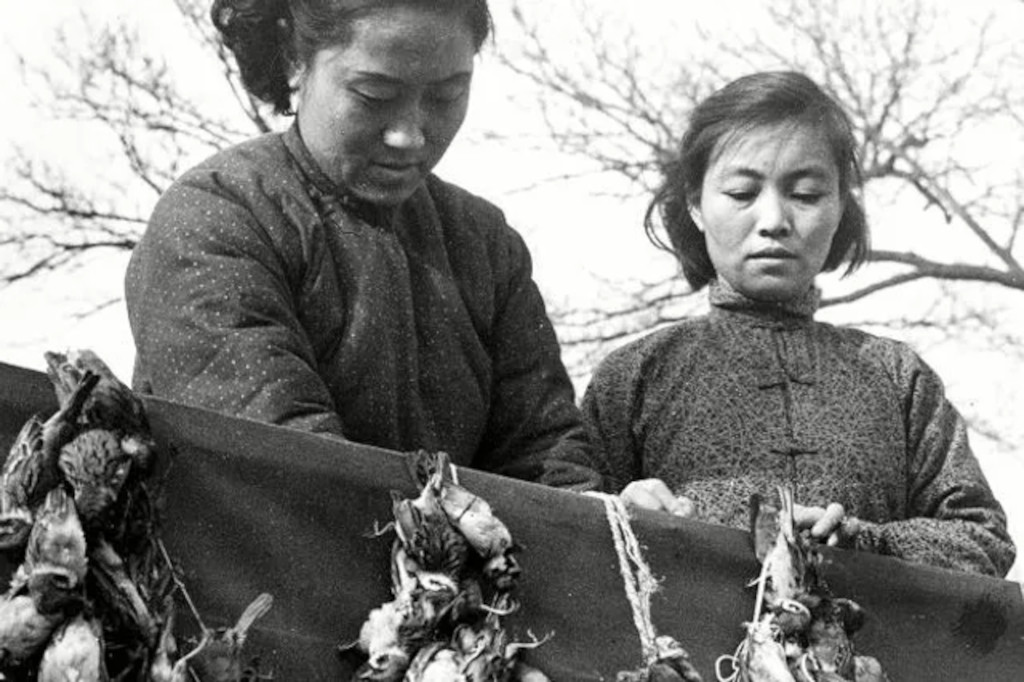
Locust populations ballooned, swarming the country and compounding the ecological problems already caused by the Great Leap Forward.
Sparrows were suspected of consuming approximately 2 kg (4 pounds) of grain per sparrow per year. Sparrow nests were destroyed, eggs were broken, and chicks were killed. Millions of people organised into groups, and hit noisy pots and pans to prevent sparrows from resting in their nests, with the goal of causing them to drop dead from exhaustion. In addition to these tactics, citizens also simply shot the birds down from the sky. The campaign depleted the sparrow population, pushing it to near extinction within China.
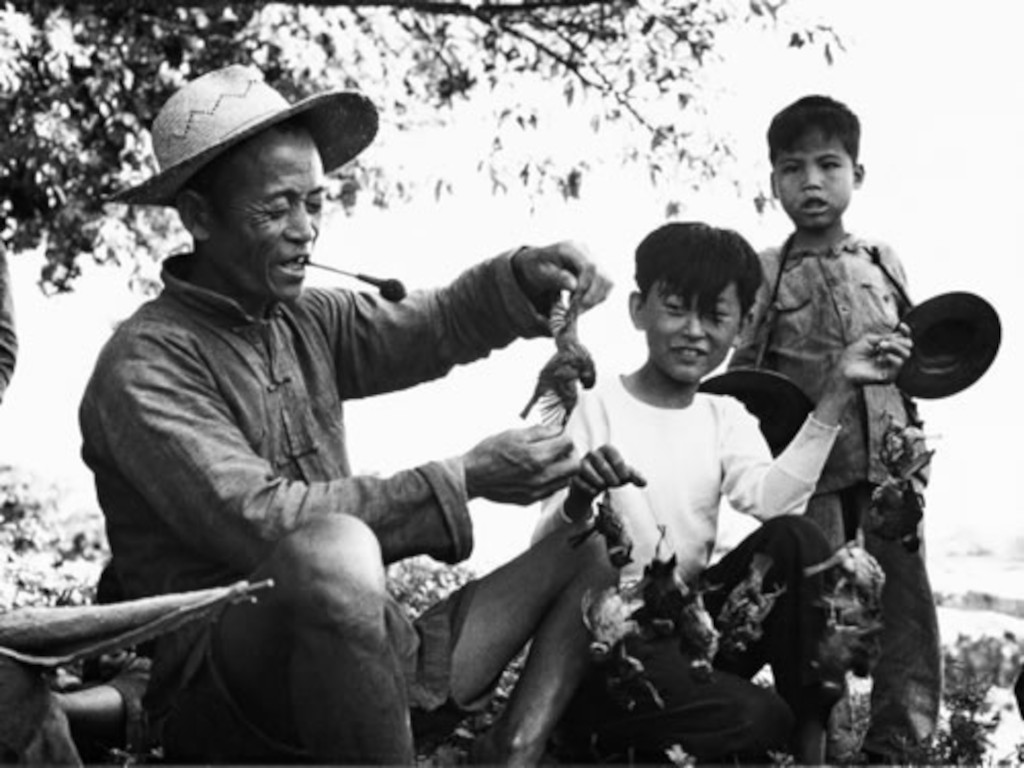
Some sparrows found a refuge in the extraterritorial premises of various diplomatic missions in China. The personnel of the Polish embassy in Beijing denied the Chinese request of entering the premises of the embassy to scare away the sparrows who were hiding there and as a result the embassy was surrounded by people with drums. After two days of constant drumming, the Poles had to use shovels to clear the embassy of dead sparrows.
Also, policies from the Chinese Communist Party (CCP) and the central government that were implemented, particularly the Three Red Banners and the Socialist Education Movement (SEM), proved to be ideologically detrimental to the aggravating famine. The Three Red Banners of the CCP “sparked the fanaticism of 1958” and the implementation of the Mass Line, one of the three banners which told people to, “go all out, aim high, and build socialism with greater, better, and more economical results” directly links to the pressures officials felt when reporting a superabundance of grain.
The SEM, established in 1957, also led to the severity of the famine in various ways, including causing the “illusion of superabundance (浮夸风)”. Once the exaggerations of crop yields from the Mass Line were reported, “no one dared to 'dash cold water'” on further reports. The SEM also led to the establishment of conspiracy thoughts, in which the peasants were believed to be pretending to be hungry to sabotage the state grain purchase.
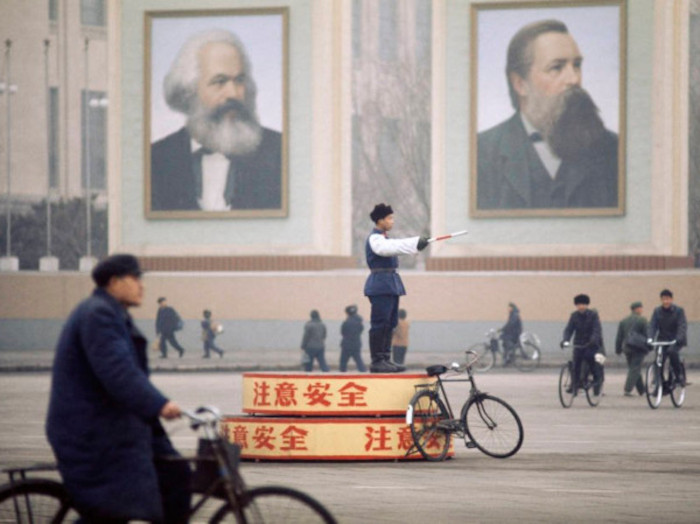

Local party leaders, for their part, conspired to cover up shortfalls and reassign blame to protect their own lives and positions. Mao was kept unaware of some of the starvation villagers in the rural areas who were suffering, as the birth rate began to plummet and deaths increased in 1958 and 1959.
In visits to Henan province in 1958, Mao observed what local officials claimed was increases in crop yield of one thousand to three thousand per cent achieved, supposedly, in massive 24-hour pushes organised by the officials which they called “Sputnik launches”. But the numbers were faked, and so were the fields that Mao observed, which had been carefully prepared in advance of Mao's visit by local officials, who removed shoots of grain from various fields and carefully transplanted them into a field prepared especially for Mao, which appeared to be a bumper crop.
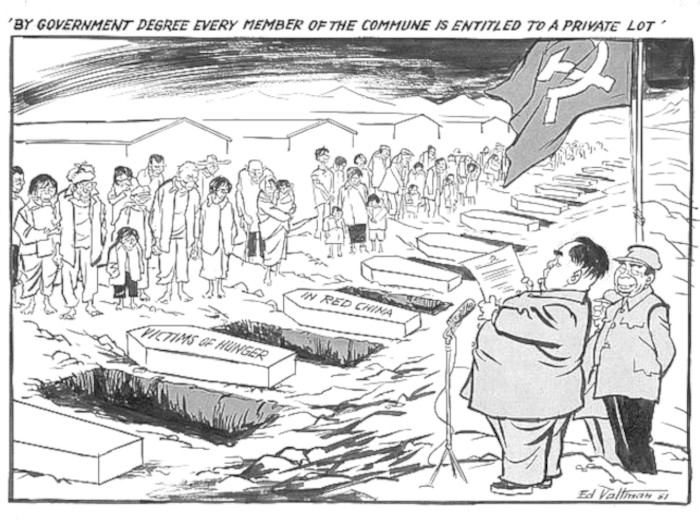
The local officials became trapped by these sham demonstrations to Mao and exhorted the peasants to reach unattainable goals, by “deep ploughing and close planting”, and other techniques. This ended up making things much worse, the crop failed, leaving barren fields. No one was in a position to challenge Mao's ideas as incorrect, so peasants pulled out their bedding and coats into the fields, added seeds and water, and after they sprouted, buried the materials under the soil once the seedlings were high enough.
In a similar manner to the massive Soviet-created famine in Ukraine (the Holodomor), doctors were prohibited from listing “starvation” as a cause of death on death certificates. This kind of deception was far from uncommon; a famous propaganda picture from the famine shows Chinese children from Shandong province ostensibly standing atop a field of wheat, so densely grown that it could support their weight.
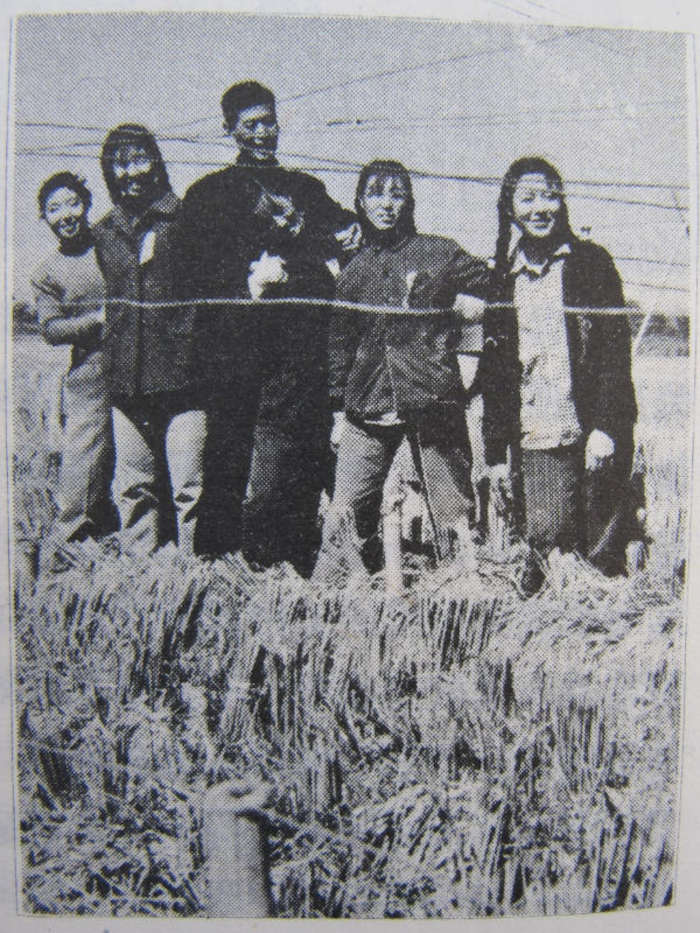
In reality, they were standing on a bench concealed beneath the plants, and the “field” was again entirely composed of individually transplanted stalks. In April and May 1961, Liu Shaoqi, then President of the People's Republic of China, concluded after 44 days of field research in villages of Hunan that the reasons for the famine were 30% natural disaster and 70% human error. In January and February 1962, the “7,000 Cadres Conference (七千人大会)” was called, and the Great Leap Forward was declared “over” by the Chinese government.
“Whipped into a fury by the chaos of the times, Red Guards — groups of youth dedicated to removing enemies through violent class struggle — and others feasted on the hearts, livers, penises, and breasts of people deemed “class enemies.” In total, 421 were eaten in at least 31 provincial counties”.
The failure of the Great Leap Forward, as well as the famine, led Mao Zedong to withdraw from active decision-making and turn many future responsibilities over to Liu Shaoqi and Deng Xiaoping. However, the disagreement between Mao and Liu (and Deng) gradually increased, until Mao launched the Cultural Revolution in 1966 during which Liu was accused of attributing only 30 per cent of natural calamities and was accused of being a traitor and an enemy agent. Liu was persecuted to death in 1968. On the other hand, Deng was accused of being a “capitalist roader” during the Cultural Revolution and was purged.
“Liu Desheng, guilty of poaching a sweet potato, was covered in urine ... He, his wife, and his son were also forced into a heap of excrement. Then, tongs were used to prise his mouth open after he refused to swallow excrement. He died three weeks later.”.
Researchers outside China have argued that the massive institutional and policy changes which accompanied the Great Leap Forward were the key factors in the famine, or at least worsened nature-induced disasters. Despite widespread famine in the countryside, China remained a substantial exporter of grain from 1958-1960.
Campaign to destroy the Four Olds
The Four Olds or the Four Old Things was a term used during the Cultural Revolution by the Red Guards in the People's Republic of China about the pre-communist elements of Chinese culture they attempted to destroy. The Four Olds were:
“Old Customs, Old Culture, Old Habits, and Old Ideas.”.
The campaign to destroy the Four Olds began in Beijing on August 19, 1966, shortly after the launch of the Cultural Revolution. The term “Four Old” first appeared on June 1, 1966, in Chen Boda's People's Daily editorial, “Sweep Away All Monsters and Demons”, where the Old Things were described as anti-proletarian, “fostered by the exploiting classes, and to have poisoned the minds of the people for thousands of years”.
“The propagandist's purpose is to make one set of people forget that certain other sets of people are human.”.
However, which customs, cultures, habits, and ideas specifically constituted the “Four Olds” were never clearly defined
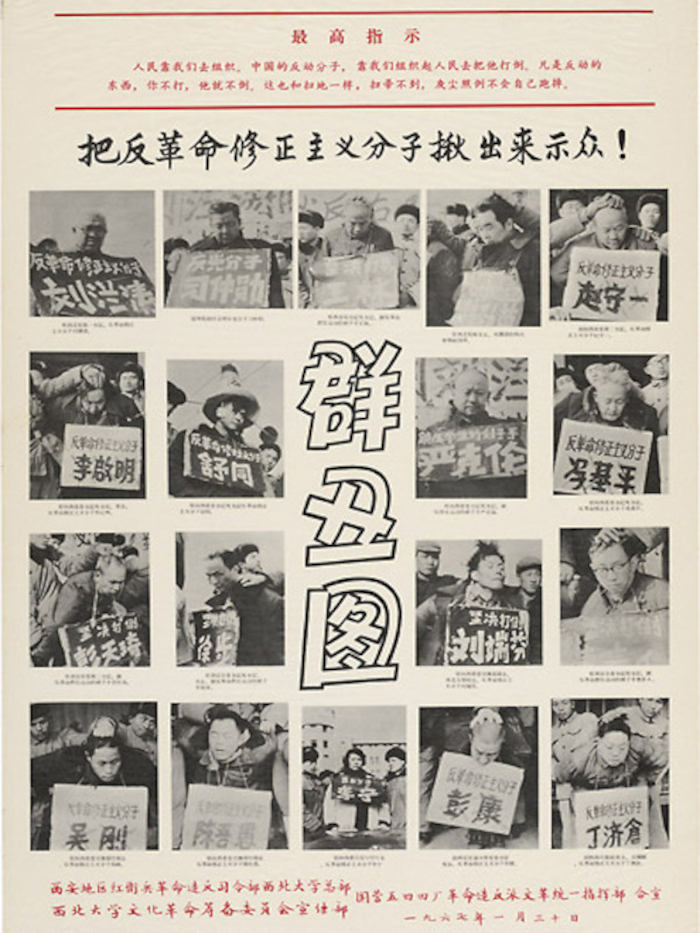
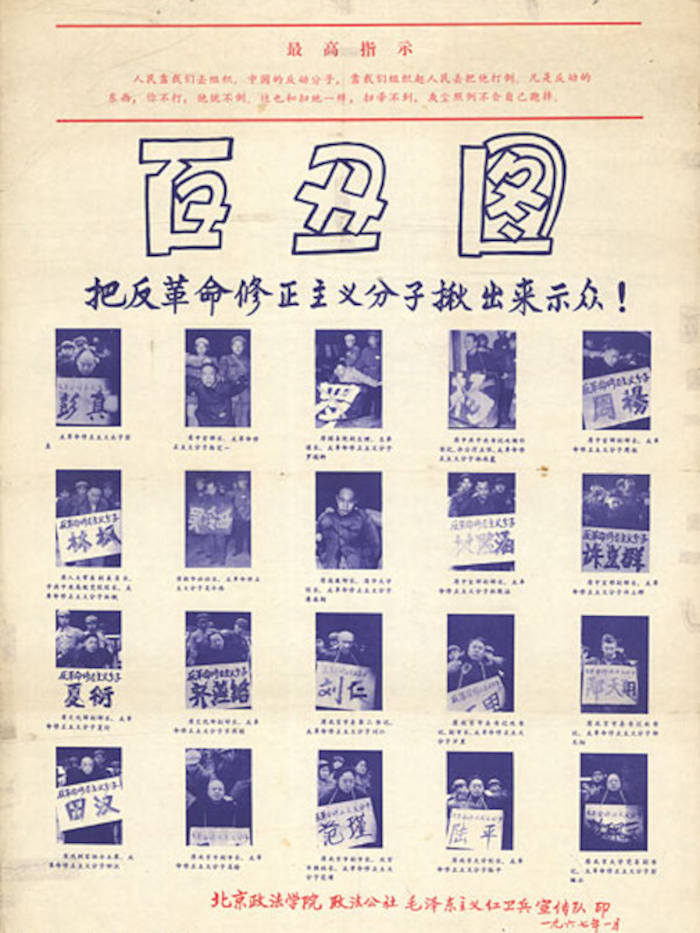
“Once people were 'dragged out' as 'evil spirits', they were forced to wear caps, collars, or placards identifying them as such, as the representatives of the 'Hundred Clowns' in the poster above. Being 'cow monsters', they were imprisoned in what was generally called a 'cowshed' (牛棚, niupeng). This did not have to be a genuine stable; it could be a classroom, storehouse, dark room or temple. In the absence of legal procedures, the length of stay in the 'cowshed' could be ten days or ten years”.”.
Calls to destroy the “Four Olds” usually did not appear in isolation, but were contrasted with the hope of building the “Four News” (new customs, new culture, new habits, new ideas). The idea that Chinese culture was responsible for China's economic backwardness and needed to be reformed had some precedent in the May Fourth Movement (1919), and was also encouraged by colonial authorities during the Japanese occupation of China.
“Niugui sheshen (cow monsters and snake demons) was the most recurrent supernatural metaphor used during the Cultural Revolution. It was rooted in Buddhist demonology and an especially potent weapon to demonise one's opponents. Other terms included 'devils' (魔鬼, mogui), 'demons' (鬼怪, guiguai), 'monsters' (魔怪, moguai), 'vampires' (吸血鬼, xixue gui), and 'apparitions and spectres' (wangliang guimei). All these 'evil spirits' could be identified with the 'demon-exposing mirror' (照妖镜, zhaoyao jing) of Mao Zedong Thought”.
The first things to change were the names of streets and stores: “Blue Sky Clothes Store” to “Defending Mao Zedong Clothes Store”, "Cai E Road” to “Red Guard Road”, and so forth. Many people also changed their given names to revolutionary slogans, such as Zhihong (志红, “Determined Red”) or Jige (继革, “Following the Revolution”).
The following account is taken from the memoirs of a woman named Nien Cheng who was fifty-one years old at the time. She was the wealthy widow of a former diplomat who had worked for the previous Chinese government, overthrown by the communists back in 1949. A week after these events, she would be arrested and kept in prison in solitary confinement for almost seven years.
“In the largest guest room, where the Red Guards had carried out most of their destructive labour of cutting and smashing, a radio set was tuned to a local station broadcasting revolutionary songs based on Mao’s quotations. A female voice was singing, “Marxism can be summed up in one sentence: revolution is justifiable”.
The students then went about the business of smashing the woman’s mirrors, furniture, porcelain dishes and priceless antiques. Her curtains, fur coats, evening dresses, and silk robes were cut up with scissors. Books and papers were ripped up and strewn. They made it a point to collect and turn over to party officials items like cameras, watches, clocks, binoculars, and silver-ware.
“The veneer of civilisation is very thin. Underneath lurks the animal in each of us. If I were young and had a working-class background, if I had been brought up to worship Mao and taught to believe him infallible, would I not have behaved exactly as the Red Guards had done”?
In later stages of the campaign, examples of Chinese architecture were destroyed, classical literature and Chinese paintings were torn apart, and Chinese temples were desecrated. In 1955, 1965 and 1976 Israel Epstein visited Tibet, and based on these three visits in 1983 published the book Tibet Transformed.
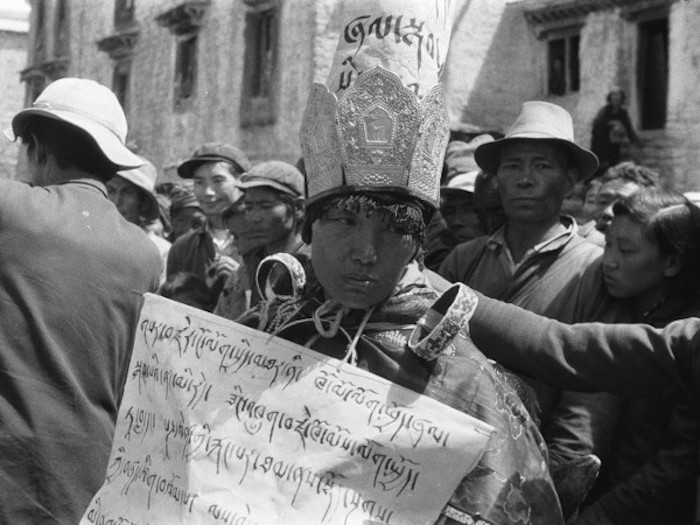
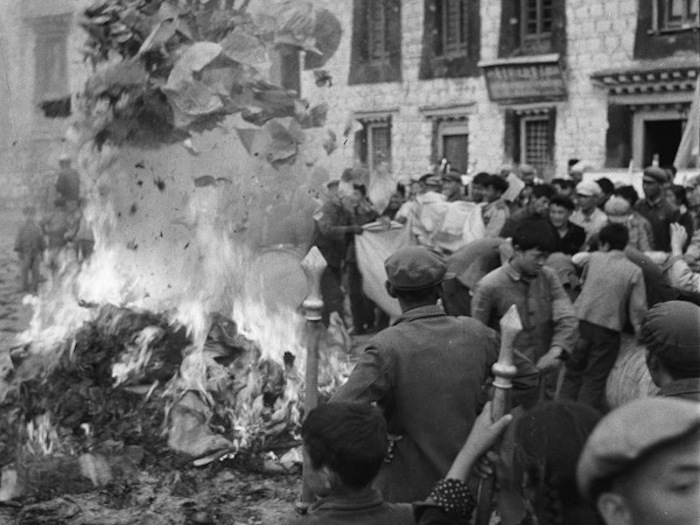
Red Guards broke into the homes of the wealthy and destroyed paintings, books, and furniture; all were items that they viewed as part of the Four Olds. Many families' long-kept genealogy books were burned to ashes. Other manifestations of the Red Guard campaign included giving speeches, posting big-character posters, and harassment of people, such as intellectuals, who defiantly demonstrated the Four Olds.
Red Devil
Although mass murderer Mao Zedong was a Christian behind the peoples “hero” was also a nonce and a lying Devil:
Sexual Deviant
Behind closed doors, Mao was a bit less perfect than his people knew. Mao claimed that he needed the waters of yin to replenish his yang—which was a fancy way of saying he needed to have sex with a lot of women to get his manliness back. Mao had a special “sex bed” made with one side raised 10 centimetres (4 in) higher than the other. Every day, he brought in peasant girls. He he made them read a sex manual called “Classic of the Plain Girl’s Secret Way”. women ended up with STDs, but they didn’t mind. Sleeping with the chairman was the most exciting moment of their lives. “The illness, transmitted by Mao, was a badge of honour,” his doctor said, “testimony to their close relations with the chairman”.
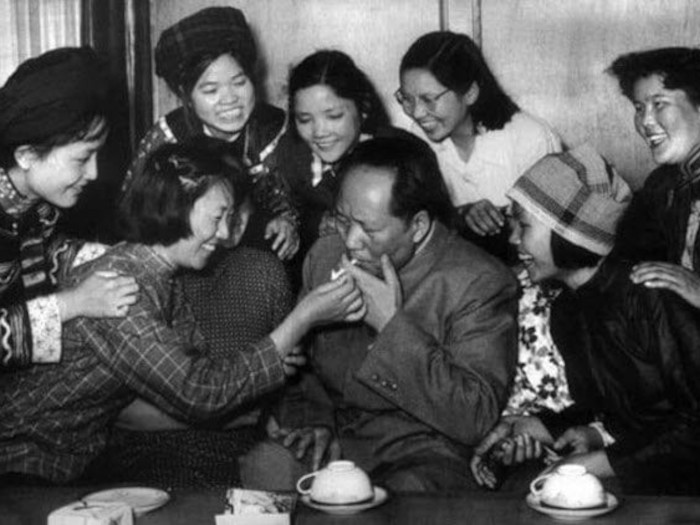
Mao sexual appetite devoured his girls young—really, really young. Criminally young, in fact. One of his most extreme age gaps came in 1962 when he was 69 years old, and he started an affair with a 14-year-old girl. Her name was Chen, and she was part of a dancing troupe that entertained the army. She sang and danced for Mao, who would watch the girls perform and then invite them back to his bedroom “to make him his tea.”. the affair went on for five years until Mao’s wife got jealous and demanded that he banish Chen. Mao wept while he told Chen, but he sent her away. Then, a few years later, he arranged for her to be married to another man—keeping her out of his life to avoid his wife’s wrath.
Dictator of Farce
In 1966, he joined 5,000 other swimmers in the annual Cross-Yangtze Swimming Competition. He was in his seventies, in the twilight of his life, but he wanted to prove that he was as strong as ever. So, he swam the Yangtze River. According to the Chinese press, Mao made the 15-kilometer (9 mi) swim in a record-shattering 65 minutes. That means that Mao swam at a speed of 3.8 meters per second—making the 70-year-old man about twice as fast as Michael Phelps. Chinese media reported that Mao hadn’t even begun to feel tired when he made it to the end.
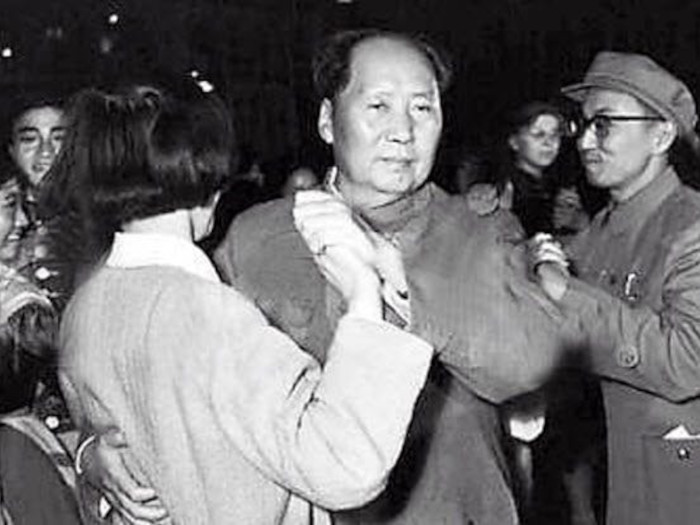
Mao had a Cultural Work Troupe—a group of girls on staff hired to dance with him. They were artists, in part, although they were mostly chosen for their looks and their ability to keep their mouths shut. Occasionally, he would take them to his swimming pool, where he would have them strip off their clothes and perform a naked aquatic ballet. More often, though, he took them ballroom dancing—something that, for most Chinese people, was a bourgeoisie crime. But for hypocrite Mao, it was forgiven. Vice Chairman Wang Dongxing organized the dances at the Spring Lotus Chamber. There, Mao and his men would dance with beautiful women until Mao picked one to take to his bedroom.
Never good enough
Mao visited Moscow in 1949, he expected a hero’s welcome. He was sure the red carpet would be pulled out for him and he would be given the honours deserved by the head of one of the greatest communist nations in the world. Instead, Joseph Stalin locked up Mao in a hotel room and bombarded him with food. It drove Mao insane. Sure he was being bugged, Mao yelled at the walls, “I am here to do more than eat and shit!”. He was wrong. That was precisely why he was there. Stalin had modified Mao’s toilet so that his waste would go into a special box instead of flushing into the sewage system. Then Stalin’s top scientists analysed Mao’s leavings. If his faeces didn’t have enough potassium, the scientists believed, then it meant that Mao was nervous.
Mao didn't believe in toilets. It stinks,” Mao said. “The smell there hurts your brain.” Whenever he had to go to the bathroom, he would head out into the woods. Every time Mao had a bowel movement, his bodyguard Li Yinqiao had to grab a shovel and go out there with Mao. Mao was constipated most of his life. His third wife, He Zizhen, had to give him enemas. Even this, though, was spun into tales of heroism. One writer claimed, “It is said that during the Long March, Mao’s bowel movements were a source of inspiration to his soldiers.”
Mao had a lot of mistresses, but his favourite was Zhang Yufeng. When they first met, Mao was in his late sixties, and she was 16 years old. It was nearly impossible for his wife to compete. Zhang Yufeng had massive power over Mao. By 1973, he had made her his confidential secretary. That meant that every time Mao’s wife, Jiang Qing, wanted to talk to her husband, she had to ask Zhang Yufeng first. Mao set up a bank account for Jiang Qing that had thousands of yuan in it. But this, too, was controlled by Zhang Yufeng. Every time Jiang Qing wanted to buy something, she had to ask Zhang Yufeng for permission.
Conclusion
Jewish visitors to China often receive a snap greeting when they reveal their religion: “Very smart, very clever, and very good at business,” the Chinese person says. Last year's Google Zeitgeist China rankings listed “why are Jews excellent?” in fourth place in the “why” questions category, just behind “why should I enter the party” and above “why should I get married?” (Google didn't publish a “why” category in Mandarin this year.).
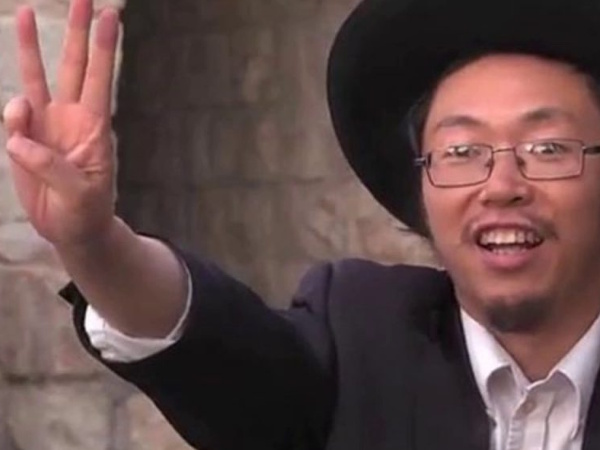
The admiration for Judaism stems from a history that goes beyond business. About half of the dozen or so Westerners active in Mao Zedong's China were Jewish, and that also led to increased interest in Jewish culture among Chinese intellectuals, says Xu Xin, professor of Jewish studies at Nanjing University.
